Morocco: Road trip to the Sahara
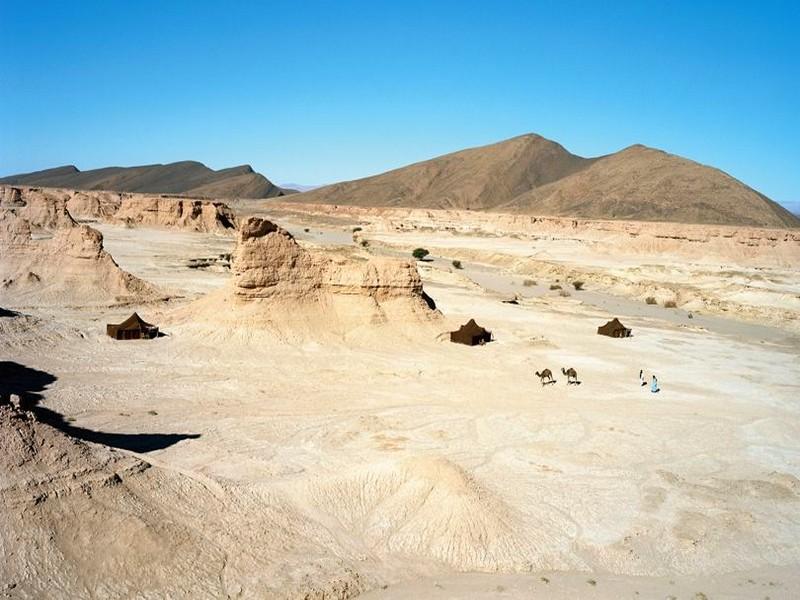
Go in search of an authentic Moroccan experience on a trip from Taroudant to the desert
The empty road turns into a track that peters out into desert floor, with holes here and there - mice? snakes? - and even in February the sun is intense. The land stretches out in all directions, shimmering to an uncertain horizon. From out of the heat haze materialises a figure, indistinct as a mirage. The figure takes shape: a young woman, incongruous in jeans and T-shirt, walking out of nothing, two wolf-like creatures circling her.
We are on the edge of the Sahara, in the middle of nowhere. For three days I have been travelling deeper and deeper into Morocco's relatively undiscovered south. The journey began in Taroudant, a city which, like Marrakech, is enclosed in centuriesold walls; but one of Taroudant's attractions is that it is not Marrakech. Tourists are few. Its Sunday market is the real deal: people, bikes and market carts flow around each other instinctively, like a shoal of fish. Villagers come from miles around to sell their wares: oranges, mint and saffron, and livestock, lowing and farting, which leave their mark long after they have been taken home. (The going rate is around £30 for a goat; a camel can fetch more than £1,000.)
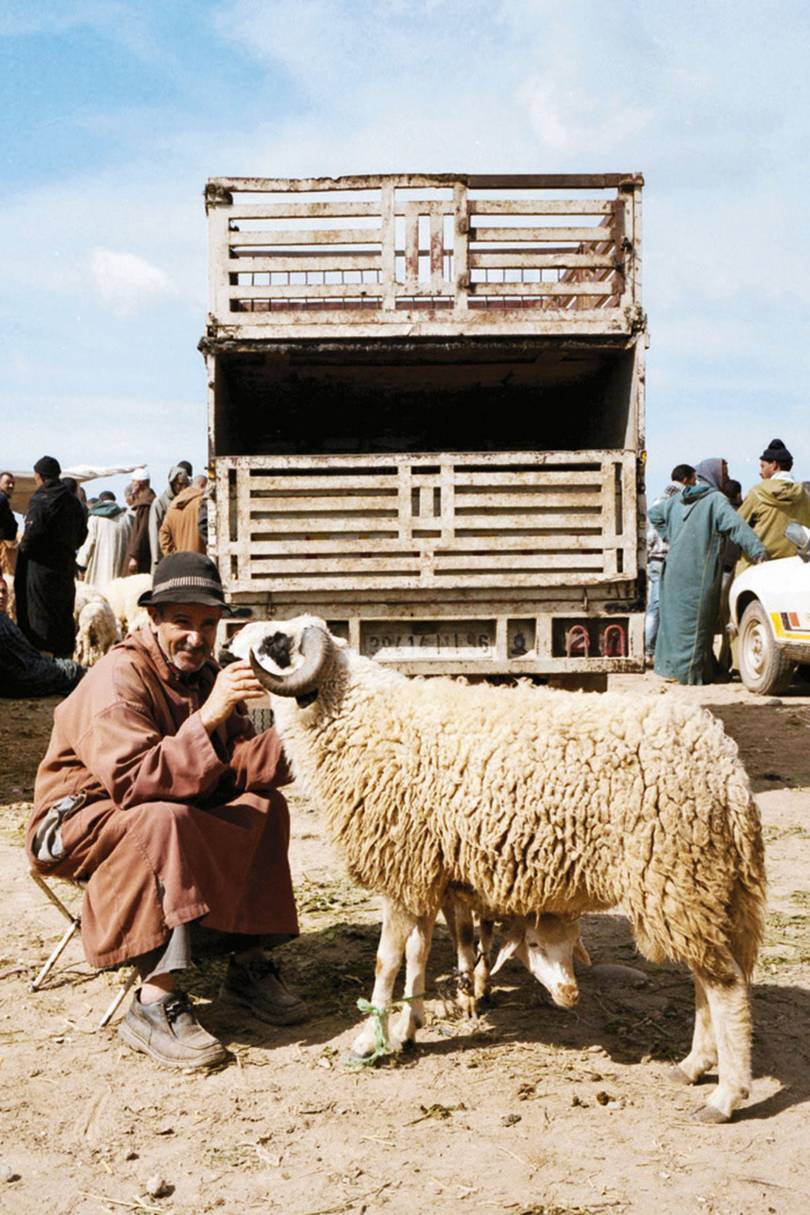
A sheep for sale in Taroudant's Sunday market, Morocco
Across Taroudant's spice-coloured rooftops are views of the snow-capped High Atlas mountains in one direction, the rolling Anti Atlas in the other. Below is a maze of lanes and souks, where I'm told you can stroll safely and without hassle, and so I do. 'Bonjour!' the young men call, and 'Ça va?'
My sense of adventure wanes when I realise I am quite, quite lost. So when a caleche pulls up I climb in, feeling slightly absurd, the Queen of Sheba up here in my horse-drawn carriage. But people take little notice, and it is a good way to explore the old city, better than a car for peering into hole-in-the-wall workshops. Vignettes are played out in a film reel of a foreign land: a weaver at his loom; a jeweller stringing beads; a butcher's shop where a baby goat's head sits on a spike, its skinned carcass hanging beside it, testicles bloated in the sun.
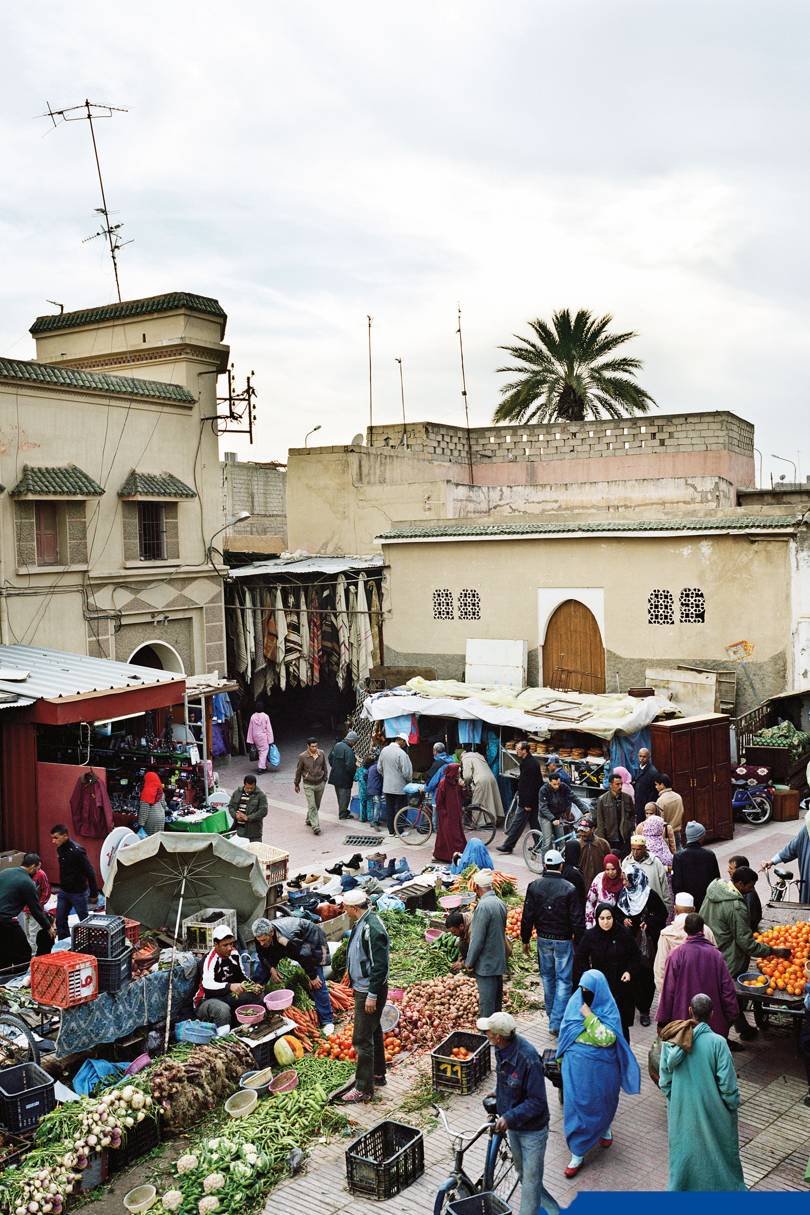
Market stalls in Taroudant, Morocco
In his tracksuit, my driver is something of a boy racer. He yells to groups of girls as we pass, and they giggle and yell right back. I had asked him to take me to the town square, from where I'd planned to walk home. But we twist and turn through unfamiliar streets, and suddenly here we are, at my guesthouse unbidden. How curious, I think; what remarkable intuition! Yet somehow, in this mystical, unpredictable place, it makes perfect sense.
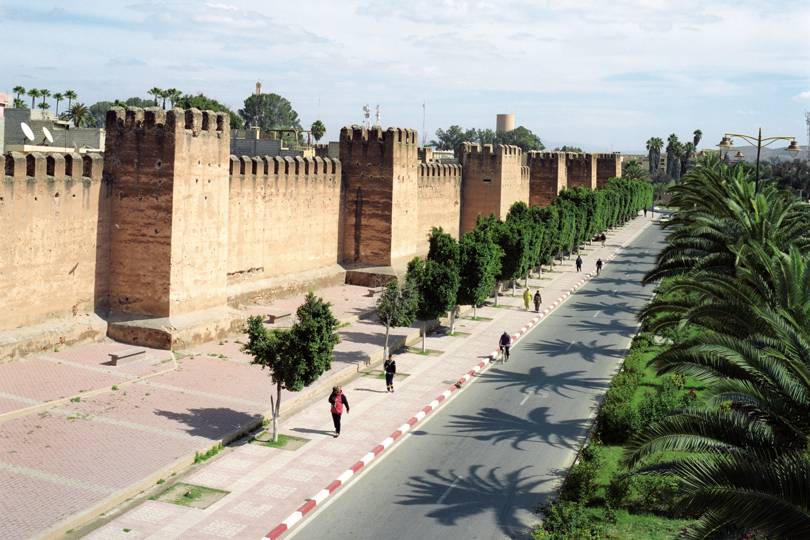
Taroudant's city walls along Avenue Moulay Rachid, Morocco
Later, a low sun casts long shadows across the town square, which is hushed yet teeming - if loitering can be described as teeming - with men. Hundreds of men, listening to musicians and wide-eyed storytellers' emphatic tales of magic and morality, or sitting at cafe tables drinking tea and talking, talking. 'Moroccans love to talk,' says Said, my guide in Taroudant. 'We talk all the time, about nothing at all.' I stay close to him, shrouded from head to toe, wondering where all the women are. 'They want some peace and quiet,' says Said with a grin.
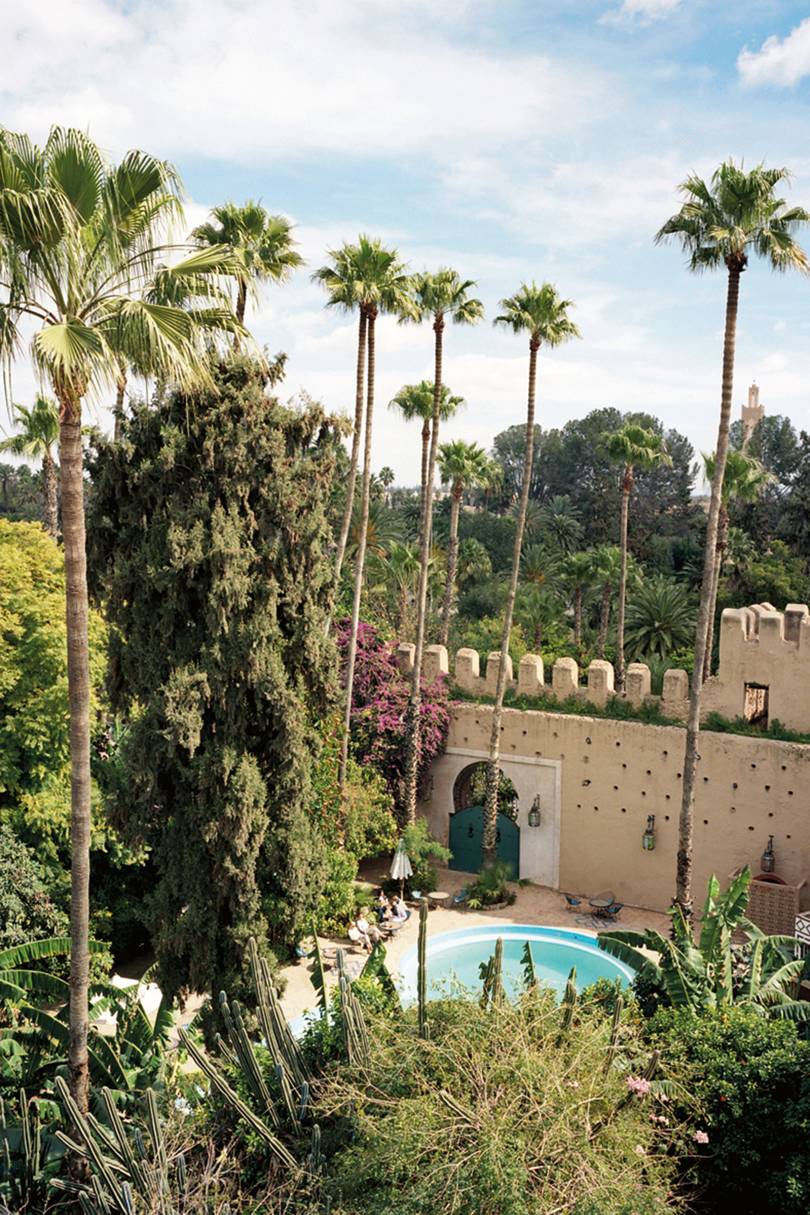
Pool and gardens at Palais Salam, Taroudant, Morocco
Condé Nast Traveller's best trips for 2018 - book now
Epic Adventures
I find them in the hammam. It is an unnerving contrast: out there covering every inch of yourself, and then, through an unmarked doorway, taking off everything in front of everyone. This is about as far from a spa treatment as you can get. There are no coloured-glass lanterns to flatter your curves; a single lightbulb, as naked as we are, hangs from the barrel-vaulted ceiling.
My first impression is of flesh, acres of pinkly scrubbed flesh: great, pendulous, watermelon breasts and monolithic thighs. It is a cross between a municipal swimming-pool shower room and a WI meeting. Far from peace and quiet, cacophonous conversation bounces off the white-tiled walls where women sit washing each other and their recalcitrant children.
I pick my way through bodies and plastic buckets to a mat, where a matronly type puts me over her knee and goes at me with a scouring pad while I try to relax, self-conscious and rigid as an ironing board. It is painful and unforgiving, but it offers an intimate window into daily life; away from their men, Moroccan women are suddenly uninhibited, warm and welcoming. Besides, I'm making the most of it - I'm not sure when my next hot bath will be. Tomorrow the real journey begins: a road trip through the mountains and desert to see Morocco's little-explored south.
We are taking the scenic route - me, photographer James Reeve and Lahcen, our driver. It is hard to imagine an unscenic route; the scenery is everywhere, we are immersed in it. Leaving the green Souss Valley, the road climbs up into the Anti Atlas until my ears pop. There are pockets of beauty: stepped terraces of green, layered like millefeuille and crinkly-edged with dry-stone walls; almond trees in pale-pink blossom that smells of honey (and the honey here smells of almond). In a valley of spiky argan trees are hundreds of goats eating everything in sight; they climb, somehow, to the tops of the trees for the nuts (the stones of which, once the goat has finished with them, are cracked open and used to make oil). The road is curiously empty, which suggests we are going nowhere, slowly. There is no reason you can't drive yourself, though having a driver has its advantages: ours also plays the role of guide, translator, historian and geologist. (And I suspect he is under strict instructions from the tour company never to exceed 100kph, because his driving is nothing like any previous journey I have made in North Africa, the full horror of which, like childbirth, your brain tricks you into forgetting.)
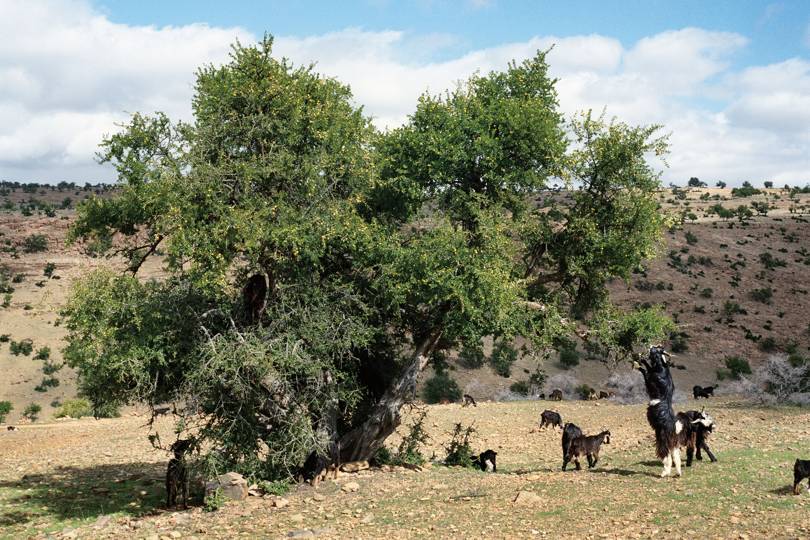
Goats feeding on a roadside argan tree between the Souss Valley and the Anti Atlas mountains, Morocco
James Reeve
Where to go when
Travel Tips
A guide can take you to see caves, for example, formed millennia ago by waterfalls, long dry, the stalactites a petrified likeness. Or to visit Berber villages of mud huts and ancient tradition. To reach them we have to cross a glacial river, and there is no bridge. Adventurer Joseph Thomson, in the 19th century, took three hours to cross a river in the Atlas with the help of several dozen soldiers and slaves, horses and camels. In the absence of horses we leap from rock to slippery rock, to the amusement of the village children, who can do it - literally - with their eyes shut.
In open doorways women bake flatbread and shell argan nuts. One wrinkly old lady, who must be 100 years old, sits next to a great mound of nuts that will surely outlast her, a mobile phone in her lap. There is a village of beekeepers, eerily empty of bees and people; so superstitious are they about the evil eye that they keep their hives out of sight behind walls. In one house we kneel at a table and share a tagine with our hosts, eating with the left hand, then make a toast - 'B'saha' - with sweet gunpowder tea.
Higher up in the Anti Atlas, the scenery becomes bigger and barer: there are great folds of red-rock mountains, formed in the Ice Age, their exposed strata looking like a contour map. As we drive, the country starts to unfold. Along the way there is much stopping: to look at the view, to invariably emerge. Conversation is limited; James and I call out 'Salaam alaikum' ('Peace be upon you') to everyone, with an enthusiasm bordering on derangement, to make up for our lack of Arabic and Berber.
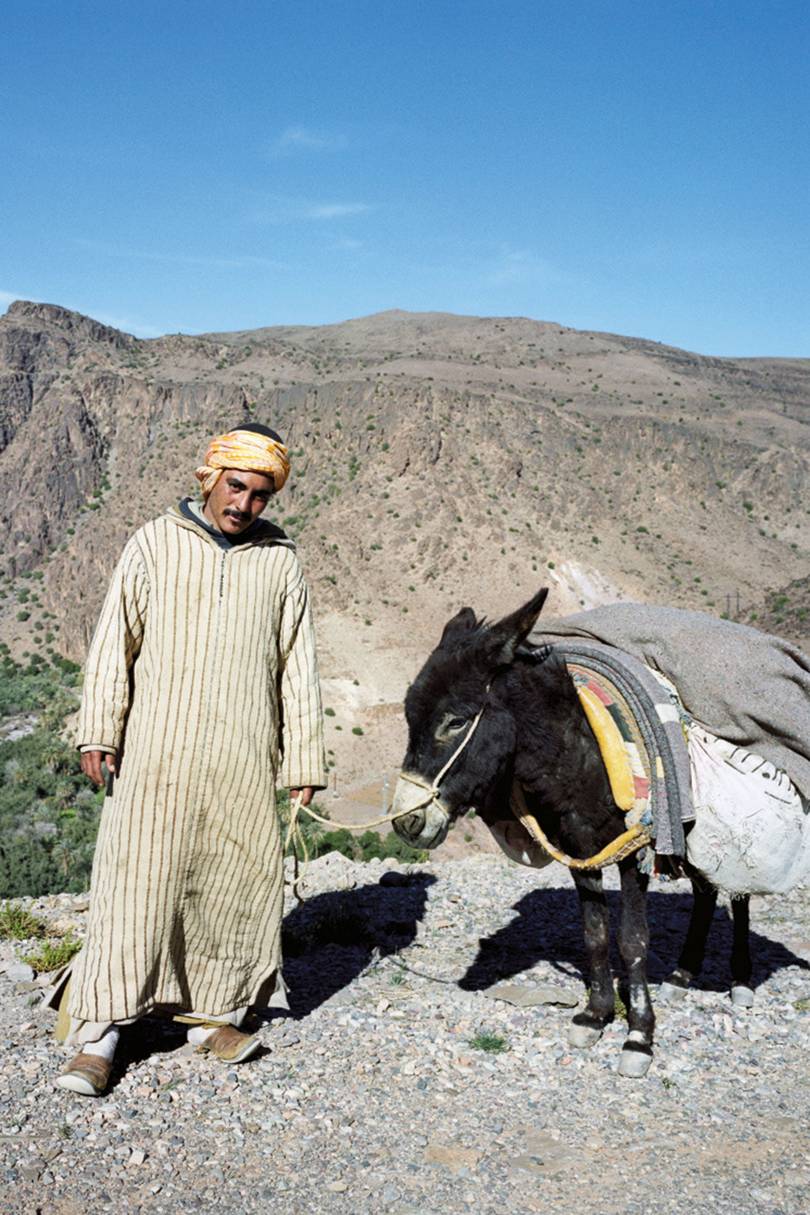
A snake charmer, Morocco
James Reeve
'Salaam alaikum!' I call to a man, from whose donkey traditional music blares – a ghetto-blaster tucked under a blanket. He grins and replies, an unintelligible stream of guttural vowels, glottal stops and poor dental hygiene, then ferrets around in his bag and pulls out a couple of snakes: a snake-charmer on his way between villages.
In an oasis in the Tata valley, towering palm trees cast zebra-stripes of shadow across squares of chlorophyll-green barley, and children play football beside the water, watched by herons, until a herd of goats storms the pitch.
Coworth Park: where Prince Harry spent the night before the Royal Wedding
Places To Stay
Coworth Park: where Prince Harry spent the night before the Royal Wedding
Three women in bright hijabs amble over, sequins flashing in the sunlight. They pick up rocks, handing some to me, then hurl them at the treetops to knock down dates. For such petite women they are remarkably strong and excellent shots, and they laugh when my attempts fail. Dates shower down, and they press them into my hands.
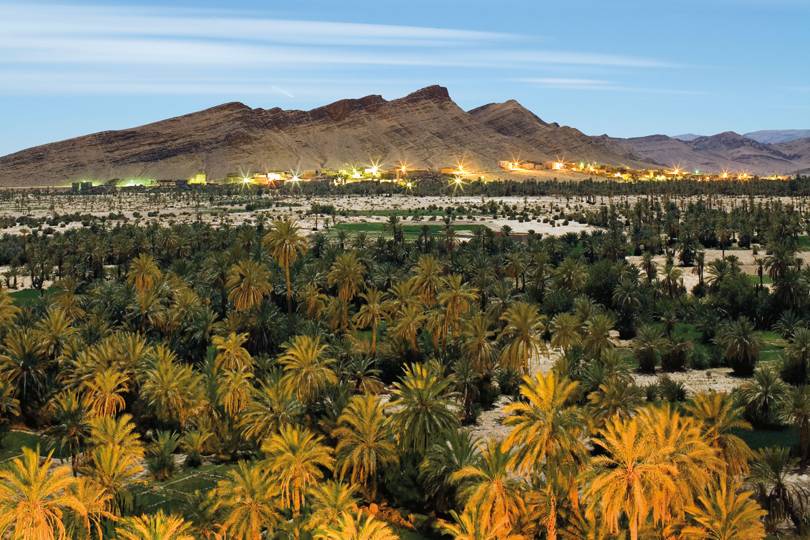
View from the roof terrace at Dar Infiane, Morocco
James Reeve
It is a delight to arrive at our accommodation in Tata. Dar Infiane is a restored kasbah, a rabbit warren of pretty courtyards and charming rooms cocooned within thick walls. Watch the step and mind your head: some doorways are not even shoulder-height, so you have to bend double and unfold yourself into your room, once you've found it. By breakfast - taken on the roof, looking across the palm-filled valley - the sun is already hot. Calls to prayer come layered from the town's numerous mosques. At the entrance to one, in a reeking backstreet, I glimpse figures bent double and dressed in white for Mawlid, the Prophet Muhammad's birthday, sonorous prayer reverberating around the ornate walls.
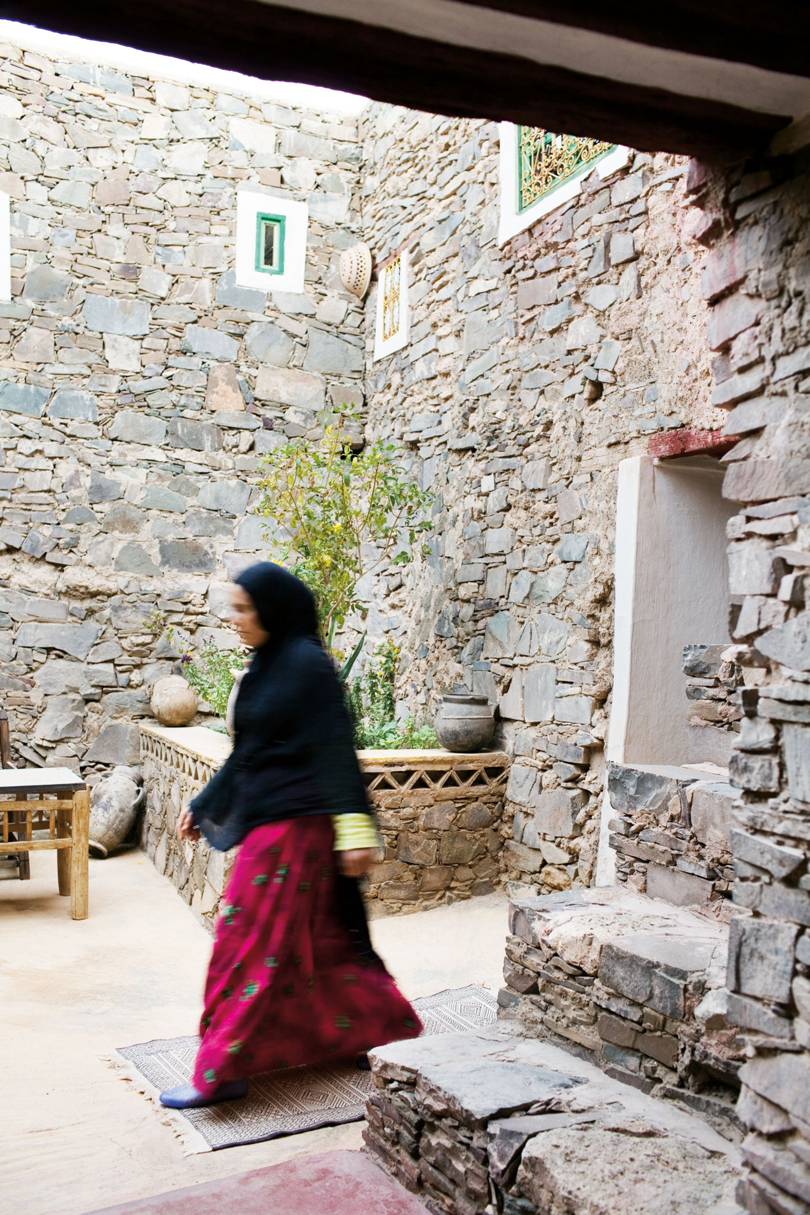
A courtyard at Dar Infiane, Morocco
James Reeve
Outside the town, in the shade of the palms, a celebratory feast is being prepared. Four men stand over the sacrificial cow. I have missed the struggle, but am in time to see the head hacked from the body with knives too short for such a task, the mess of its great neck, red and white and oozing; and the hide peeled away like the skin of ripe fruit.
Tradition endures in Tata. The town clock is 3,000 years old, and the clock-keeper looks not much younger. Lahcen takes me to meet him, and explains: a floating bowl in a bucket of water has a tiny hole in it. When it fills and sinks to the bottom, that marks one hour, and the clock-keeper ties a knot in a piece of string. One man does this from dawn till dusk, every day. It is like hearing a holy man's description of infinity.
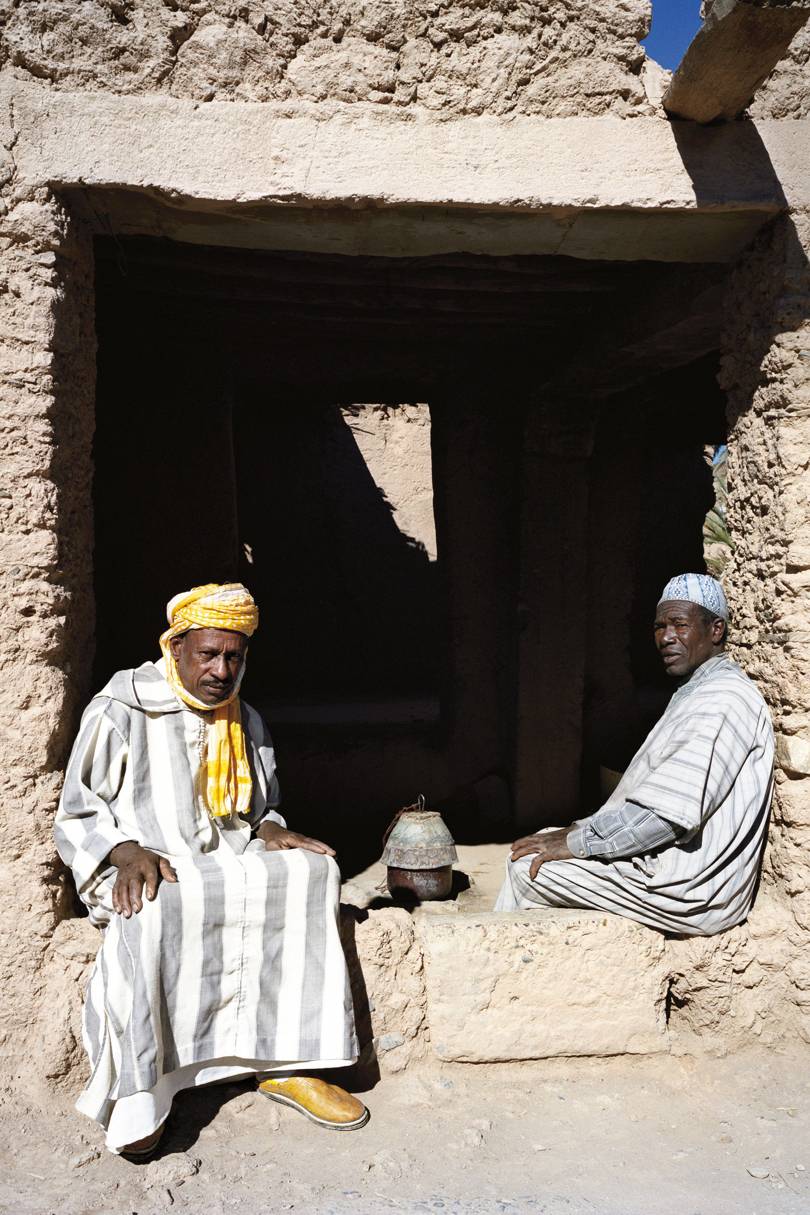
The clock-keeper (right) and a friend in Tata, Morocco
James Reeve
We sit with him awhile. A man on a motorbike putters by, white robes streaming out behind him: Lawrence of Arabia on his modern steed, and with a mobile phone pressed to one ear. Phones, but no clocks? 'Oh, they have clocks,' says Lahcen.
Further west we go into the desert, where there is nothing but scrub and the odd miraculous acacia tree. Now and then a person in the distance gives you some idea of the scale of the landscape. There are nomads wandering among the goats; a camel-herder and his camels, perhaps 50 of them; a man chasing a donkey, robes hitched up above his knees.
We have left the road and are in the desert itself when we see the woman in jeans and T-shirt. We stop the car and wave madly, and ask what on earth she is doing out here in the middle of nowhere, alone. 'Just taking the dogs for a walk,' she shrugs, as though it is the most normal thing in the world.
She is the girlfriend of Sylvain, a man who came here from France a few years ago and never went home, and who built the desert camp we are heading for, Campement Akka Nait Sidi. We may be on the edge of something vast and unconquerable here, but to them it is just their back garden.
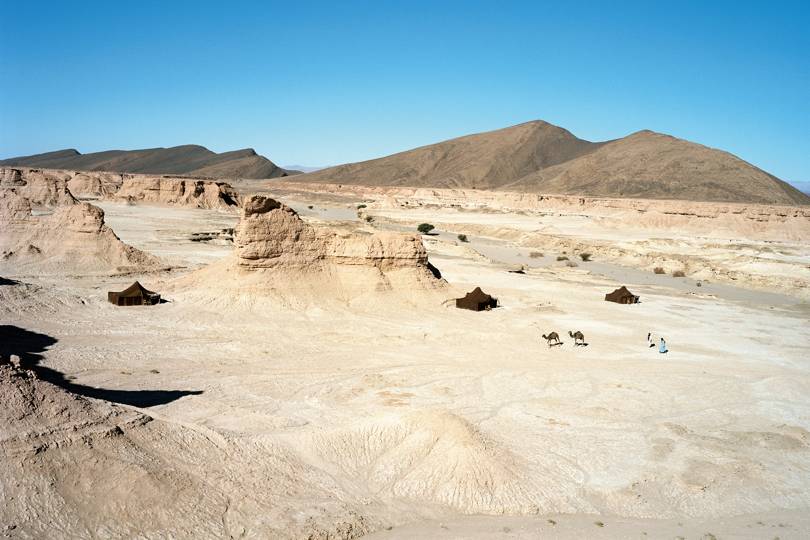
Campement Akka Nait Sidi, Morocco
James Reeve
Sylvain leads us on foot to the edge of an escarpment and, spread below, on a terrace overlooking the valley floor, are a handful of nomad-style tents. (You may arrive by camel, if you prefer, or ride one into the desert; but bring a cushion.) The tents, woven from goat hair, are basic but cosy, with rugs, a double bed, a table and chairs. It’s the location you come for, and the peace: when the wind drops there is no sound at all. A flock of birds takes off suddenly, as though under starter’s orders, with a whoomph that’s startlingly loud.
The sun sets fast, red and gold. Like lunch, dinner is tagine of goat, eaten in the dining tent or under the stars. A full moon eclipses the lanterns, casting shadows as distinct as the sun and turning the land silver. I stay up, wrapped in blankets, until the re burns out, looking up at the constellations and vowing to learn to identify even one; feeling very far away from the world, and yet more connected to it than ever before.
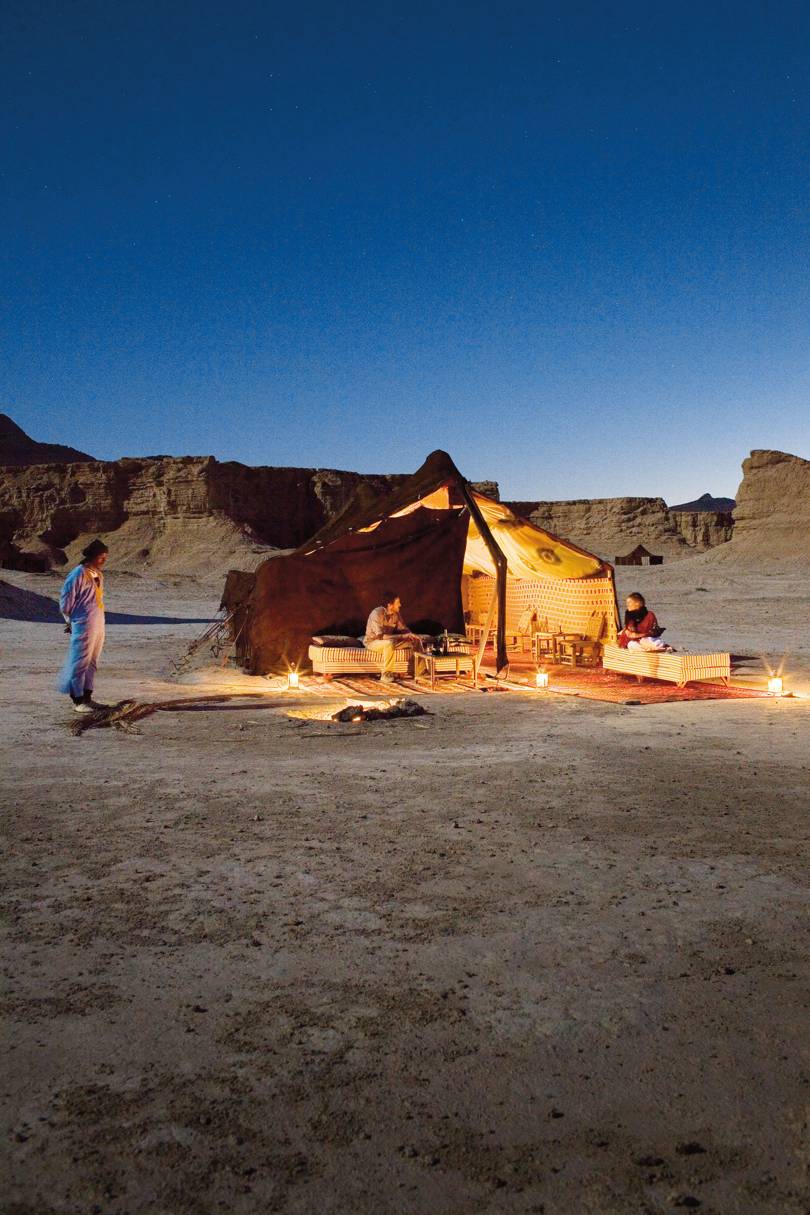
Outside the dining tent at Campement Akka Nait Sidi, Morocco
If in the village of Icht small boys appear and offer to show you something, let them. It is less ominous than it sounds: they will lead you into a pitch-black tunnel which winds up to the crumbling kasbah, built when Icht was a caravanserai on a trading route. I am staying at the more modern Borj Biramane, in a stone bungalow that feels luxurious after a tent.
The wind howls through Icht, filling my hair and pockets with dust. It is on the edge of the Sahara, and about as close to the no-man’s-land that marks the border with Algeria as you can get. The hotel owner, Philippe (another Frenchman), will take you further into the desert in a four-wheel-drive to marvel at the vastness and geological weirdness. Rhino, giraffe and antelope, long since moved on, were etched 5,000 years ago onto cubes of granite that look as though they might have tumbled down from the cliff yesterday. Within such spectacular scenery, the drawings seem paltry and insubstantial: modern graffiti on the face of eternity.
I run up sand dunes and look across lemon-meringue-pie hills, whipped into peaks, to where a moon has appeared in the pastel-streaked sky. It looks huge, and so close, its own highlands and deserts clearly visible. And II might as well be on Mars, in this otherworldly, inhospitable red terrain.
On the way to Amtoudi Agadir the road stops in mid-air. The bridge is gone. Last year, says Lahcen, heavy rain swept the bridge away; a year on, and still no bridge. We steer off the road and over the stones of the dry riverbed.
The agadir is a hilltop fortress, where from 400AD until the 1970s the villagers kept their valuables, from grain to gemstones. It’s a steep, 45-minute climb above Amtoudi – quite a way to go for the daily shop – and it is worth starting early to zigzag your way up in the cool shadow of the valley, just as the sun is painting the top of the hills pink.
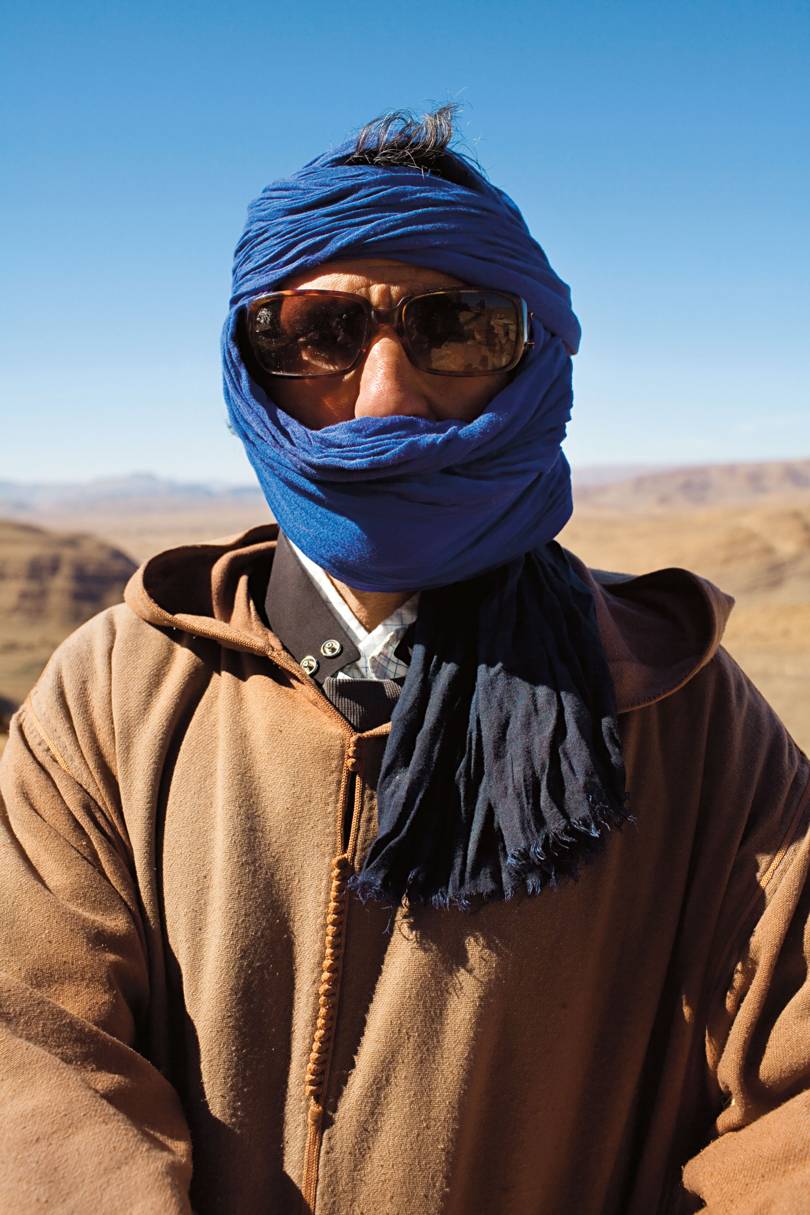
The fortress's key-keeper, Morocco
James Reeve
At the summit, a dude in sunglasses and a jellaba opens the door to the fort with a key made of wood, and shows me round the tiny rooms full of dust and artefacts, and the towers from which sentries must have enjoyed the view. Then he’s off back to the village – he has an appointment with a carpet-fitter – and it’s just me up here with the birds and the bees. Gradually I tune in to the tiniest sounds. The bees are the busiest things I’ve seen all week. Life passes slowly here. I think of the women shelling the argan nuts, the watchful camel-herder, the clock-keeper monitoring the passage of time in a bucket.
Last stop: Tafraoute. This pleasant, sleepy town in the Ameln Valley, blanketed with almond blossom, is renowned for its beautiful women, and men come here to seek a wife. I will spend my last days hunting for antiques in the souk and lying by the pool at Chez Amaliya, on a terrace overlooking the valley’s striking rock formations (some of which were painted blue by the Belgian artist Jean Verame in the 1980s; they blot the landscape like a tattoo, though their scale is extraordinary).
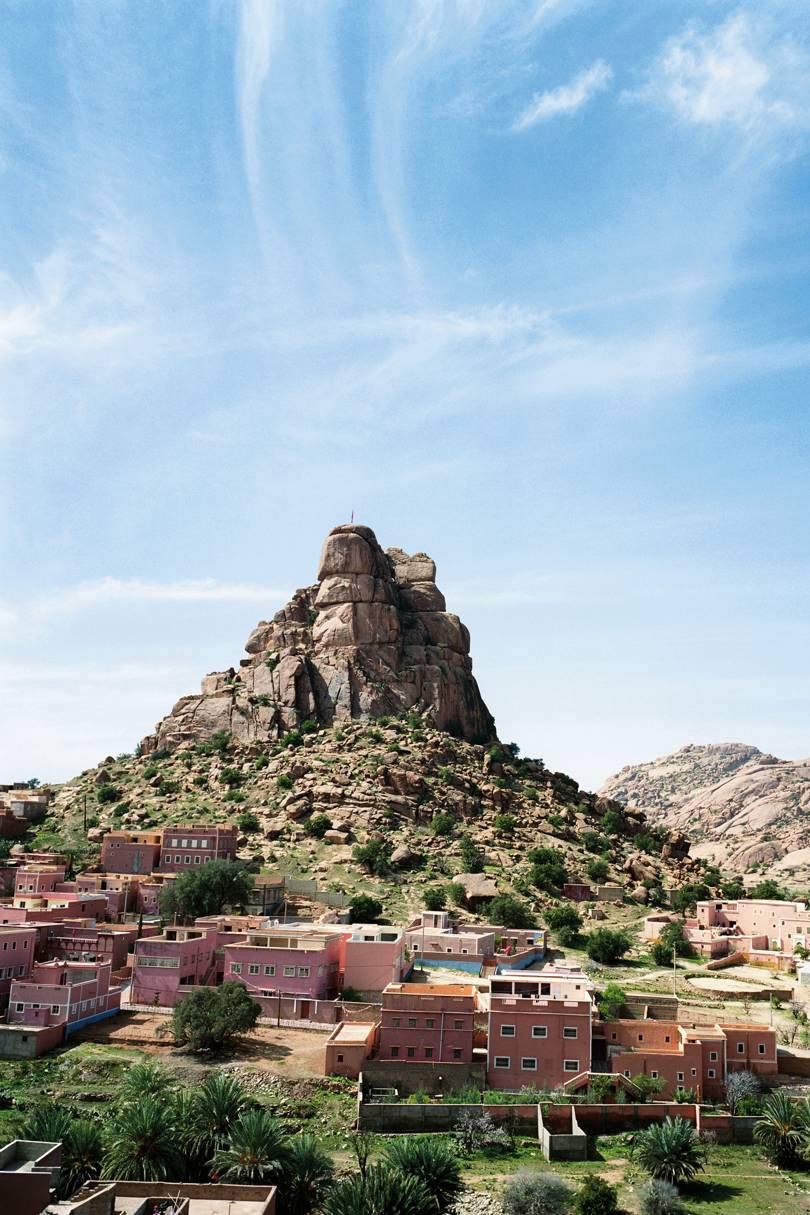
Napoleon Rock, outside Tafraoute
James Reeve
Up on the mountain road, as we approach the Ameln Valley, Lahcen recalls a time he and his grandmother came here to revive body and soul in mineral springs, in a village called Lalla Mlouka, too small to appear on any map. The sun is hot, and the idea of a dip is appealing. But his memory is hazy and we come to a dead end; what was once a village is now fields again. Lahcen asks directions from a group of men, who all talk at once and at length. They gesture left and right. ‘They have never heard of it,’ says Lahcen eventually.
At the top of a steep hill, we stop and ask directions from a man and his wife. She is carrying a huge basket of wood on her back; he is carrying nothing at all. ‘Is that normal?’ I ask Lahcen, who looks embarrassed. ‘Maybe in the countryside,’ he says. ‘But in Marrakech, there is a woman who drives a bus!’
No one seems to have heard of Lalla Mlouka. We are about to give up when Lahcen, on a hunch, swings down a bumpy lane. On foot we skirt barley fields, following a spring upstream.
‘Here,’ he says. ‘This is for the women.’ He points across a gully, and respectfully leaves me to it. There is nothing here except a concrete cubicle, inside which are three girls, shivering and wet. Behind them the space drops away. Before I can change my mind I undress, leaving my clothes on the dirt floor, and blindly descend the steep steps into darkness.
‘Salaam alaikum!’ I call out. A hand comes up out of the gloom and guides me into the pool, warm and sulphurous. As my eyes become accustomed to the dim light from above, I make out three heads above the water; smiling, offering hands and names, theirs all strangeness and song. And I sink down into the water, fully immersed, in something real, and unseen.
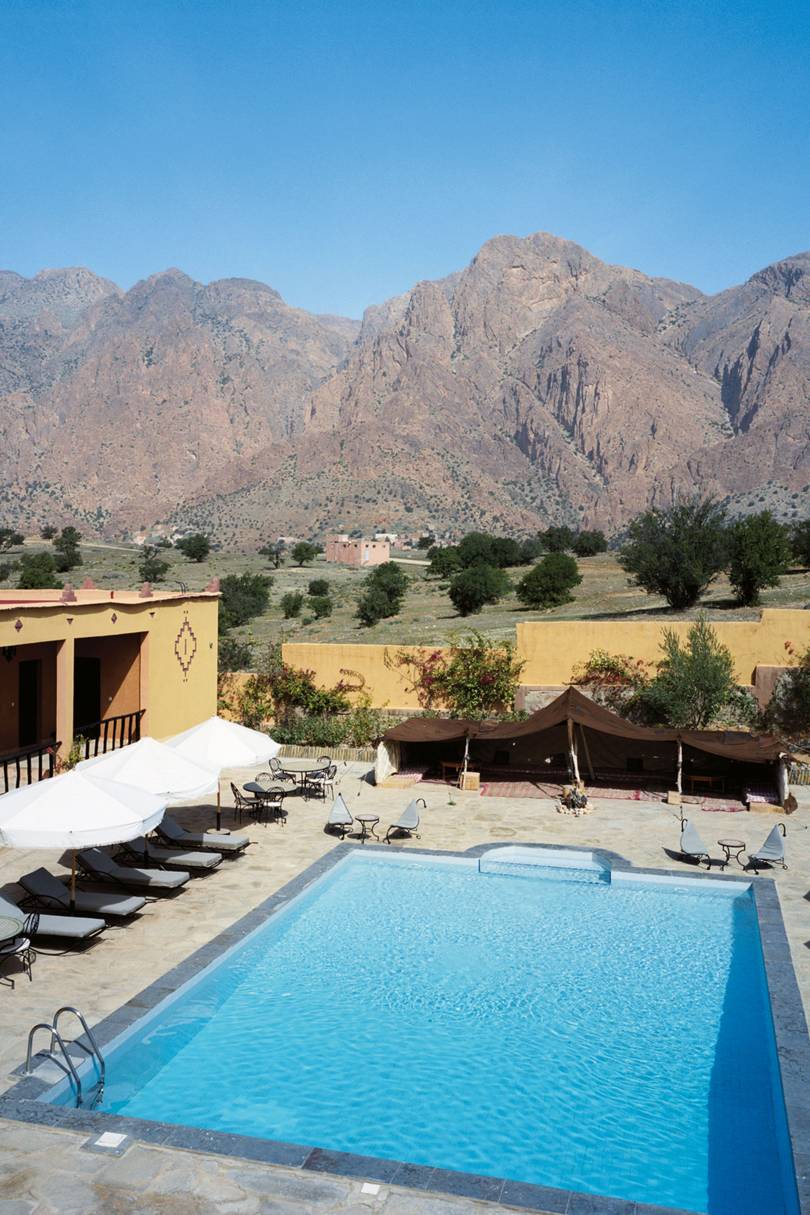
The pool at Chez Amaliya, Morocco
Dar Zitoune, Taroudant A delightful escape from the city, with its pool, gardens, spa and bar, well-trained staff and tasteful, spacious bungalows with hammam-like showers. 00 212 528 551141; www.darzitoune.com. Doubles from €120
10 places that are even better in the snow
Worldwide
10 places that are even better in the snow
Palais Salam, Taroudant Beloved for its faded grandeur and its shady, blue- and-white-tiled courtyards and fountains. In the dark lounge, stale cigarette smoke and a sense of better days long past hang in the air. But the rooms are authentic. 00 212 528 852130. Doubles from 934 dirhams (about £75)
Dar Infiane, Tata A restored kasbah full of labyrinthine passageways, pretty courtyards and unusual rooms; one, a gallery, has ve single beds, like a dwarves’ cottage, and looks down onto a salon with a piano. The staff are great, and so is the food. Knowledgeable French owner Patrick Simon can take you on a tour of the area. 00 212 661 610170; www.darinfiane.com. Doubles from around €80
Campement Akka Nait Sidi, Tissint A French-run, nomad-style desert camp in the most stunning location. Seven basic but comfortable tents, two dromedaries, solar- heated water in the shower block and a plunge pool for when the weather really hots up. The dining tent has daybeds and a firepit for evening socialising. 00 212 662 024184; www.cans-akkanaitsidi.com. Tents from about £45
Chez Lahcen, Tissint If camping doesn’t appeal, this is a more comfortable option. Opened last autumn on a cliff high above an oasis outside Tissint, this joint venture between Frenchman Sylvain Pidlon and the eponymous Lahcen Ousaïd has four rooms, all large, cool and minimal. 00 212 662 024184; www.cans-akkanaitsidi.com. Doubles from about £80, half-board
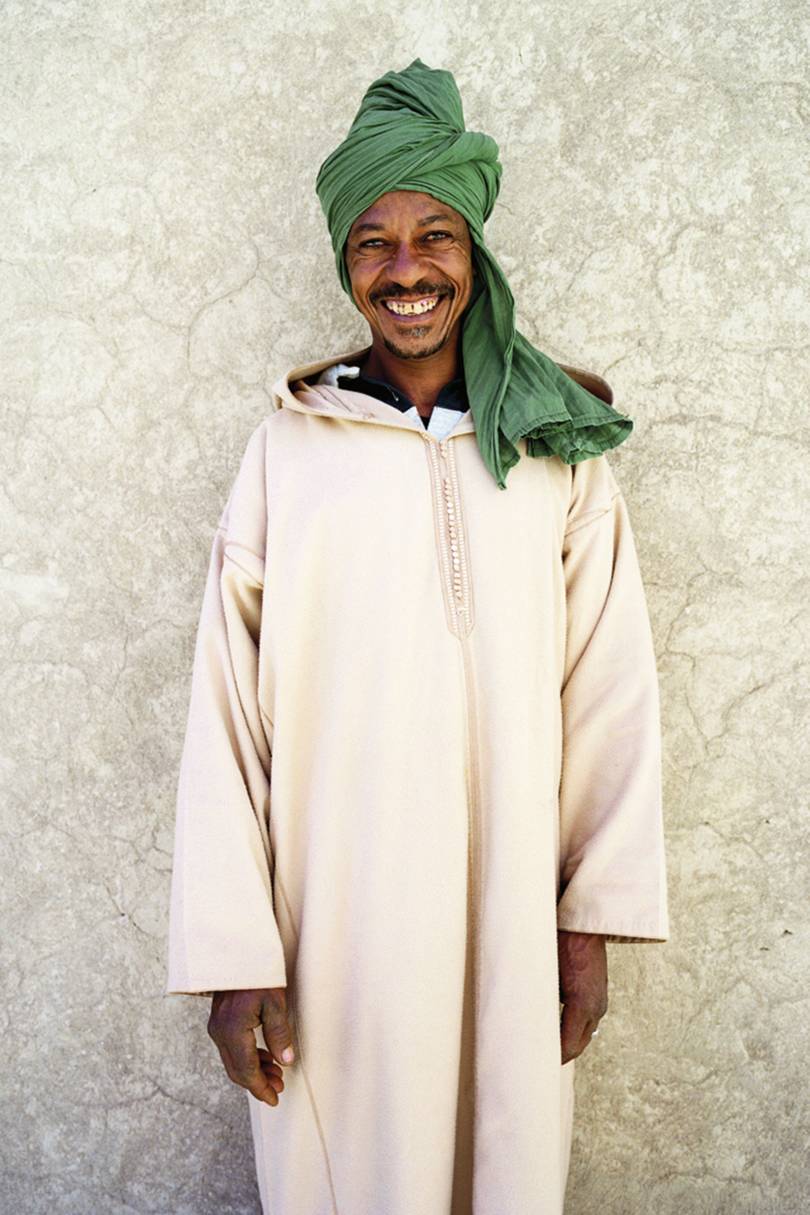
Lahcen Ousaid, co-owner of Chez Lahcen, Morocco
James Reeve
Borj Biramane, Icht It looks like a campsite, but don’t be put off; the rooms are well designed with nice bathrooms, the food is good and the French owners could not be friendlier. There’s a pool in the summer months. www.borj-biramane.com. Doubles from about £40
Chez Amaliya, Tafraoute The pool terrace, with its views of the Lion’s Head rock formation, is the reason to stay at this little guesthouse owned by a Dutch woman and her Moroccan husband. The food is good, too, but the rooms are small and dun-coloured. 00 212 528 800065; www.chezamaliya.com. Doubles from about £30
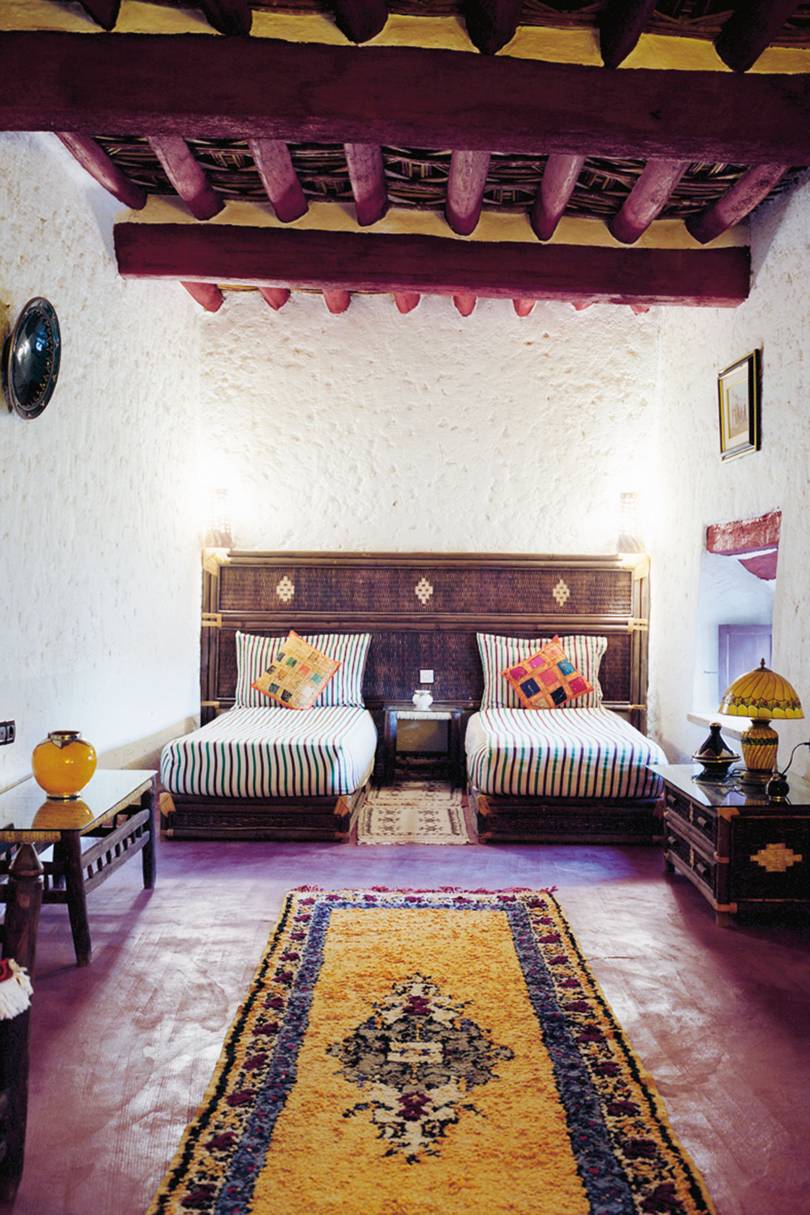
A bedroom at Dar Infiane, Morocco
James Reeve
GETTING TO SOUTHERN MOROCCO
Naturally Morocco (www.naturally morocco.co.uk) can arrange bespoke itineraries like this to Southern Morocco and the Western Sahara.BEST TIME TO GO TO SOUTHERN MOROCCO
Go in spring for the almond blossom and to avoid the summer heat
Le 6 February 2018
Source web Par Cntraveller
Les tags en relation
Les articles en relation

L’état de Khadija, “la fille aux tatouages”, se détériore
L’affaire a défrayé la chronique en août dernier au Maroc. Khadija Oukarrou, l’adolescente de 17 ans qui a été sauvagement violée il y a environ deux ...
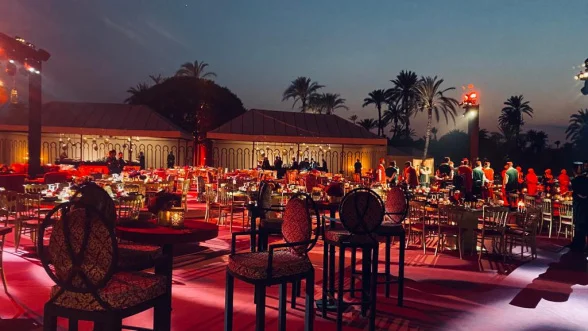
VIDÉO-DIAPO: QUAND YARIV EL BAZ MARIE SA FILLE À MARRAKECH
La ville de Marrakech vit en ce moment au rythme d'une méga-fête de mariage dont les célébrations se poursuivent jusqu'au 19 octobre. Les images. ...
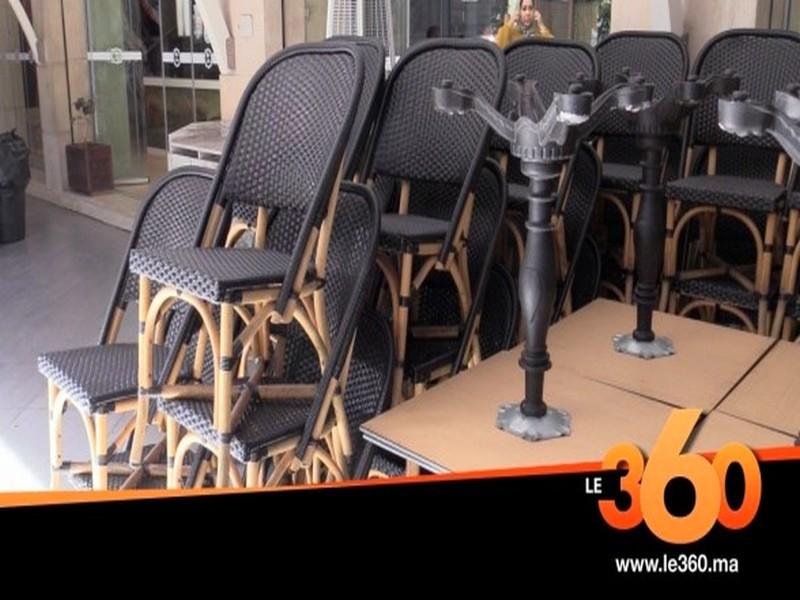
Etat d'urgence sanitaire: les autorités ordonnent la fermeture d'une dizaine de restaurants
Certaines enseignes ont même autorisé des soirées arrosées, parfois un peu trop animées. La cupidité sans bornes a poussé certains propriétaires de rest...

Marrakech: plusieurs interpellations suite à une descente dans un café
Les autorités locales de Tasseltant, aux environs de Marrakech, ont fait une descente, ce mercredi soir, dans un café, propriété d’un conseiller communal....
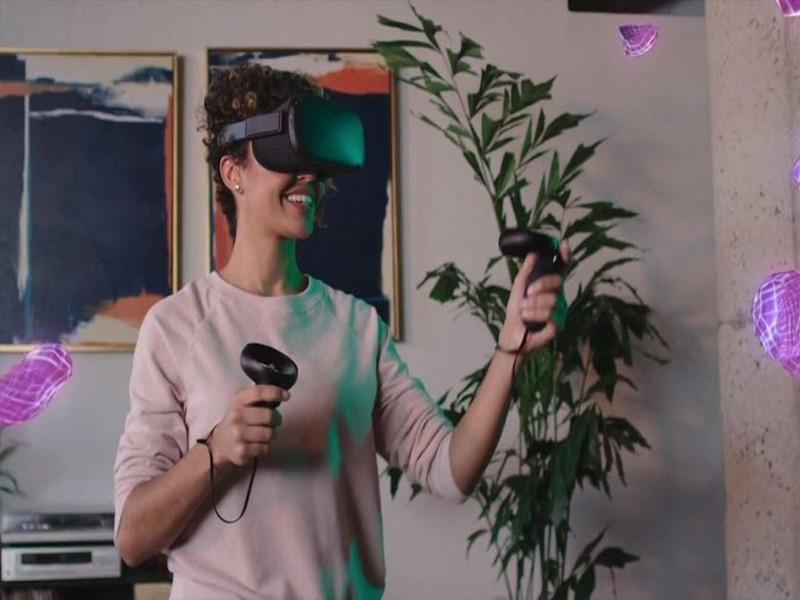
Facebook dévoile son casque de réalité virtuelle
Facebook a dévoilé, hier mercredi, un nouveau casque de réalité virtuelle (VR) sans fil mais assez puissant pour permettre une immersion dans des jeux sophi...
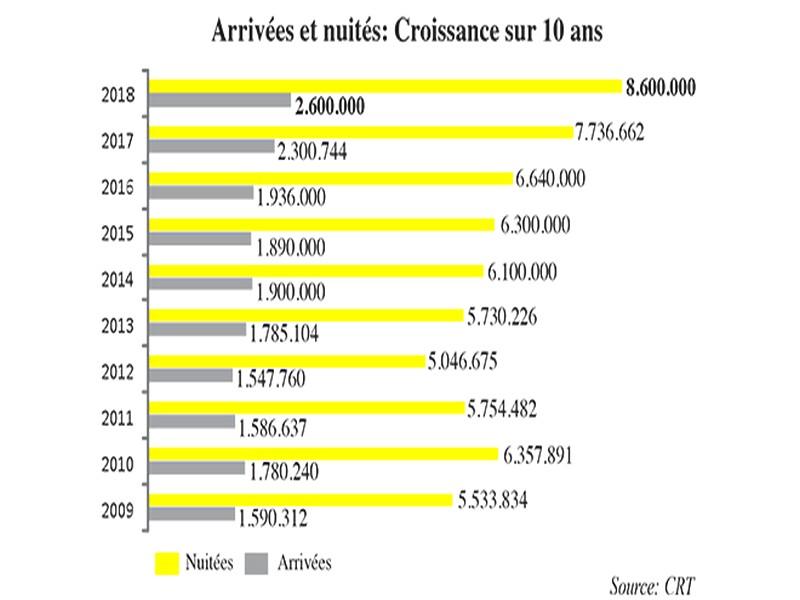
Tourisme: Marrakech, un cas d’école en Afrique
Qualité du produit, renforcement de l’aérien, PPP… les recettes de la performance C’est une performance exponentielle que celle enregistrée par Marr...

Rabat: le roi Mohammed VI a présidé une importante cérémonie
Le roi Mohammed VI, accompagné du prince Héritier Moulay El Hassan et de la princesse Lalla Khadija, a présidé, ce lundi au Palais Royal à Rabat, la céré...
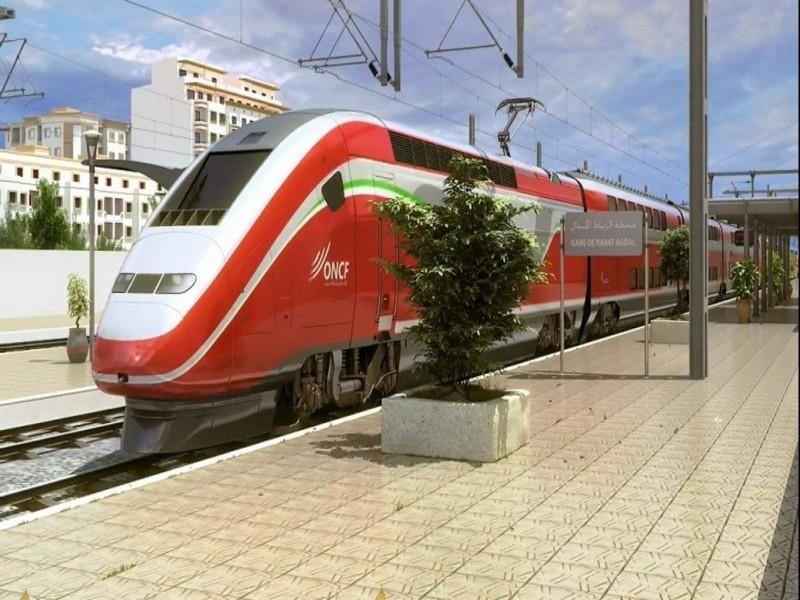
Bientôt une ligne ferroviaire entre Marrakech et Agadir
ONCF - Le projet d'extension du réseau ferroviaire national avance à grands pas. Jeudi, une réunion de travail s'est tenue dans ce sens entre Zineb E...
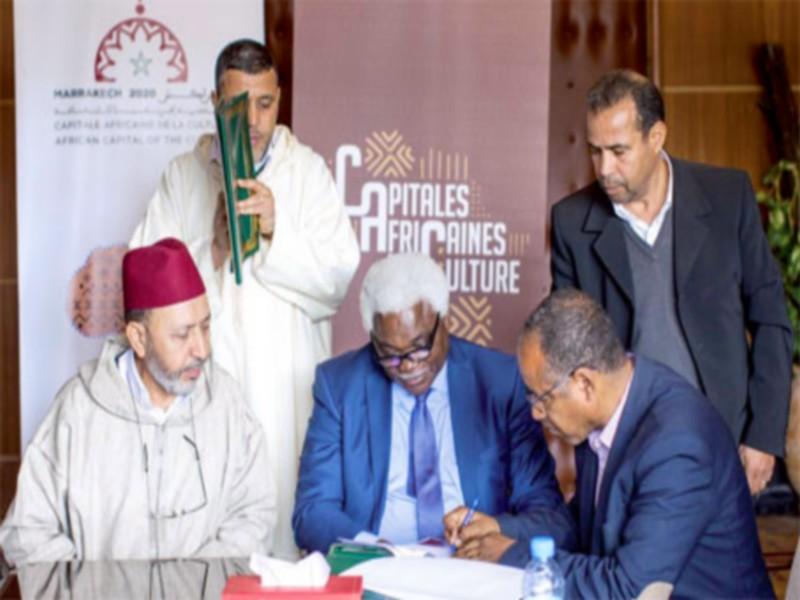
Imbroglio autour du statut de «Capitale culturelle d’Afrique»
Marrakech perd sa position pour 2020, Rabat prend le relais Une décision inattendue et «non justifiée» Les professionnels se disent atterrés �...
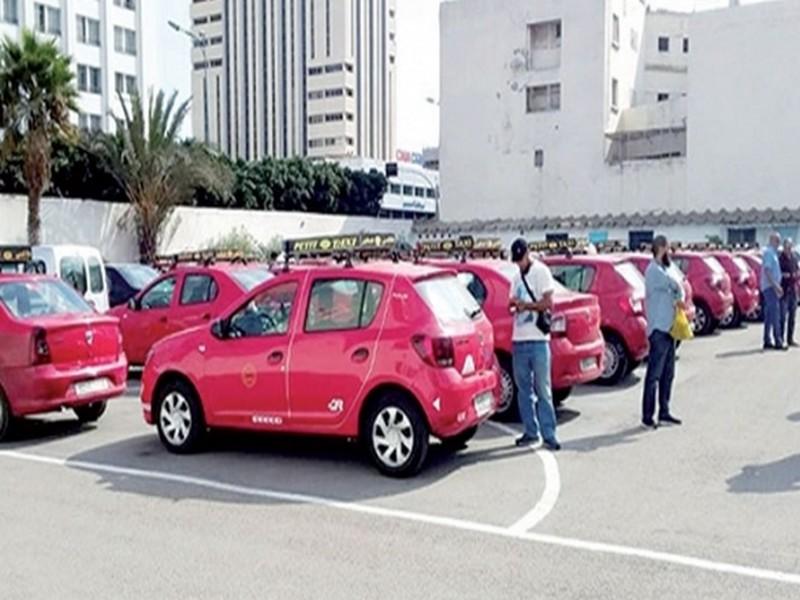
Taxis: le renouvellement du parc encore loin des objectifs
L'opération de renouvellement des petits et grands taxis avance à petits pas. Depuis son lancement en 2010 et jusqu'à mai 2018, 15.352 taxis de 2ème...
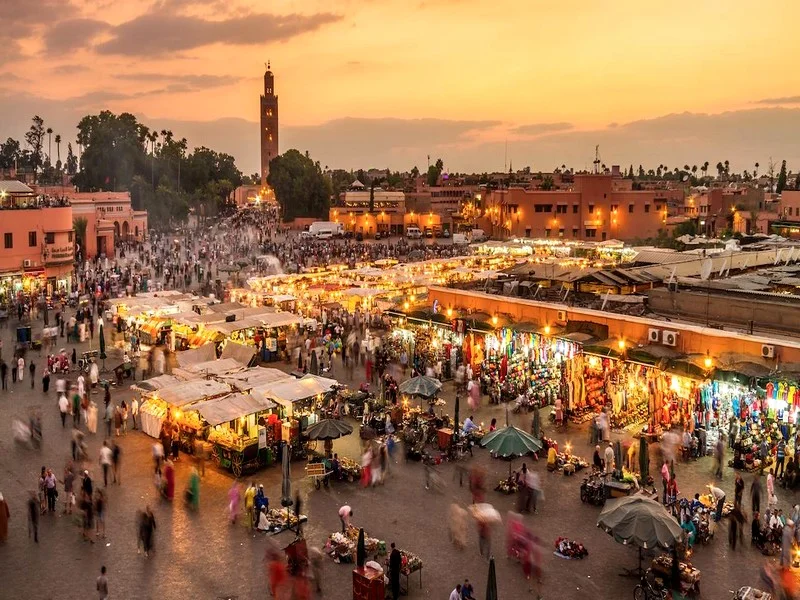
Marrakech : L’inflation en baisse
Une baisse sensible des prix a été relevée durant ces derniers mois. Ce sont généralement les prix des produits alimentaires, principalement les fruits et ...

Clôture de la 1ère édition du Sommet "Women In Africa" à Marrakech
La 1ère édition du Sommet "Women In Africa" (WIA) a pris fin, mercredi à Marrakech, par l’élaboration des feuilles de route sectorielles précises dans 6 ...


 lundi 16 juillet 2018
lundi 16 juillet 2018 0
0 
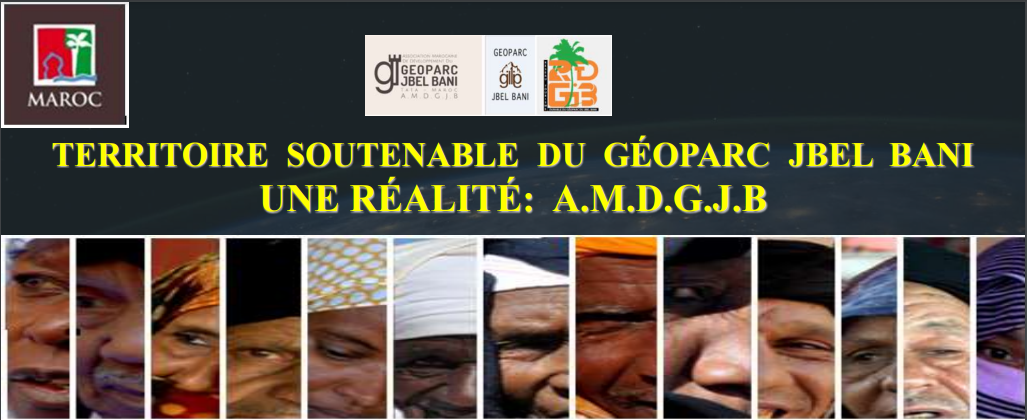
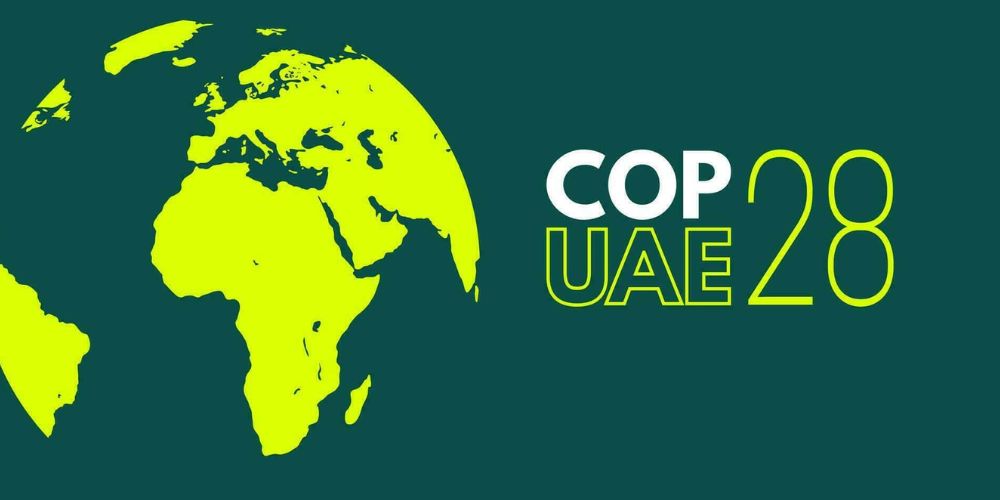
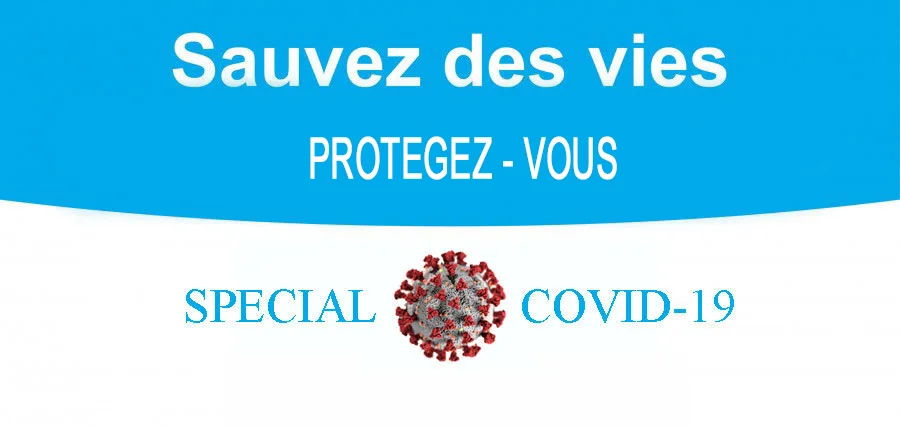

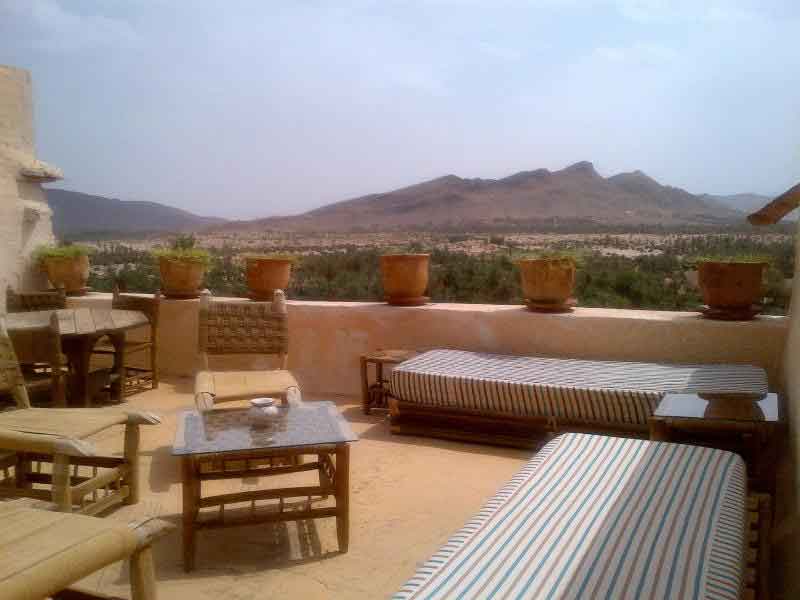
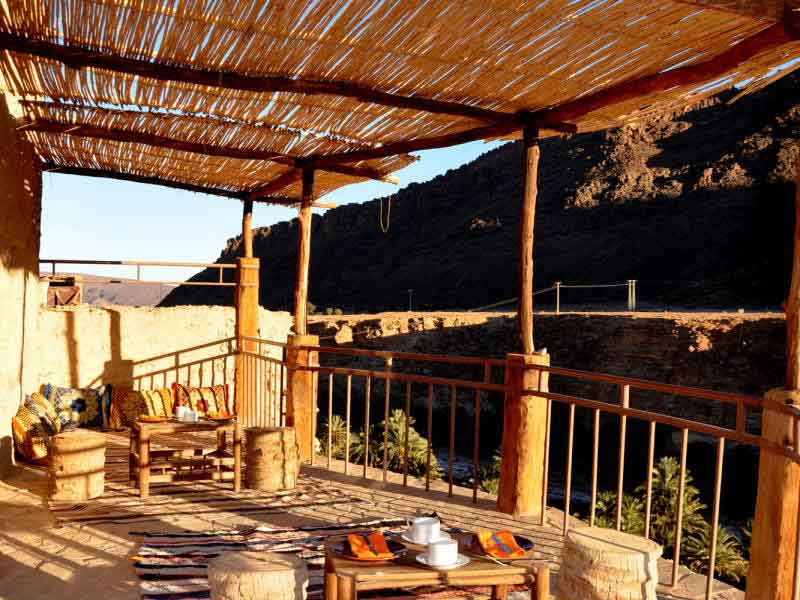
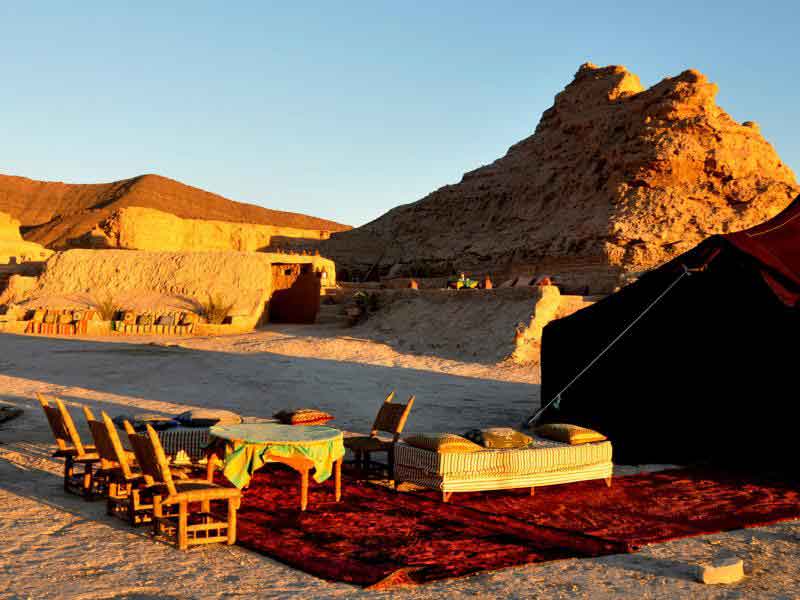
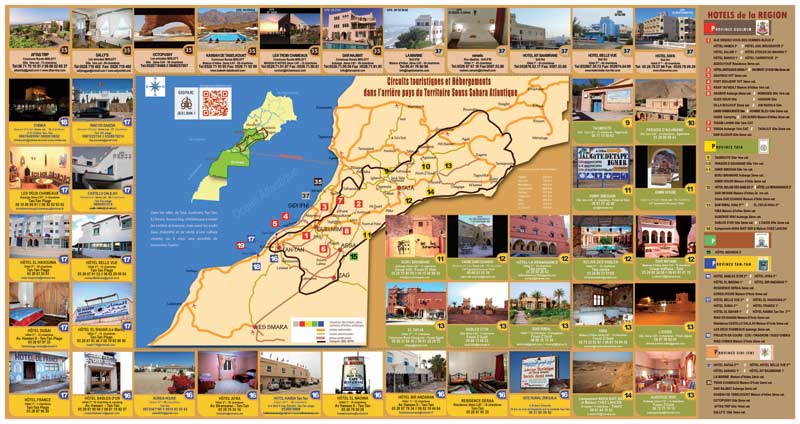
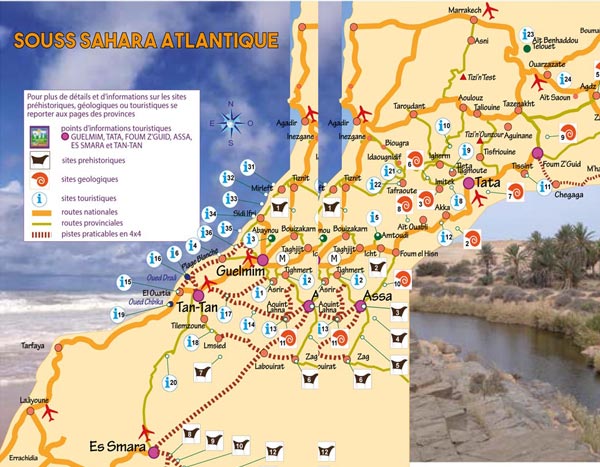
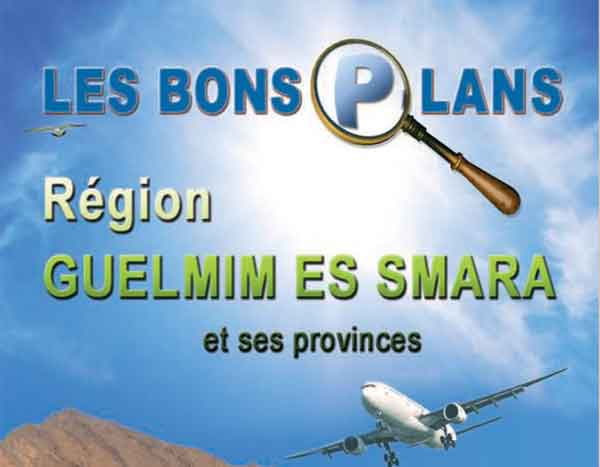
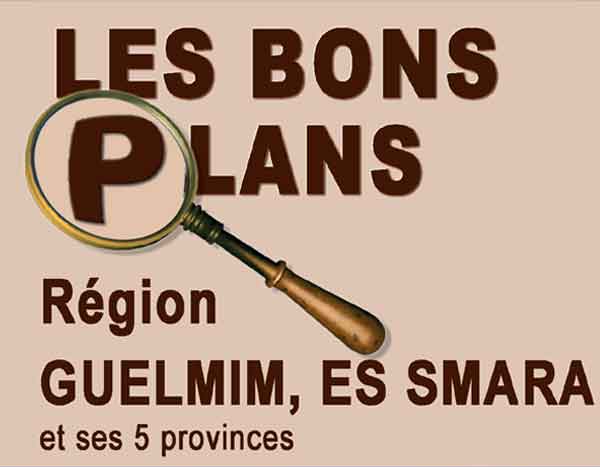
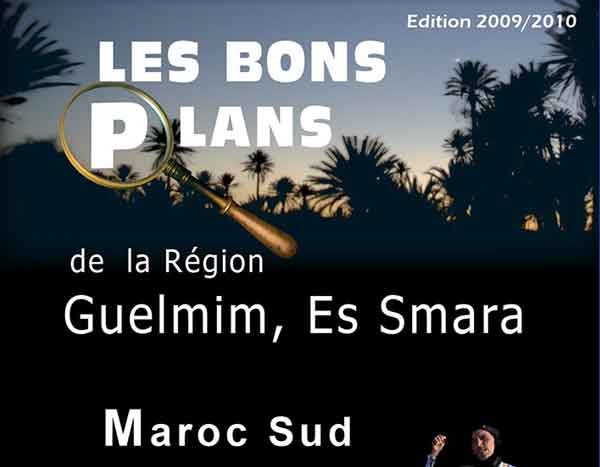
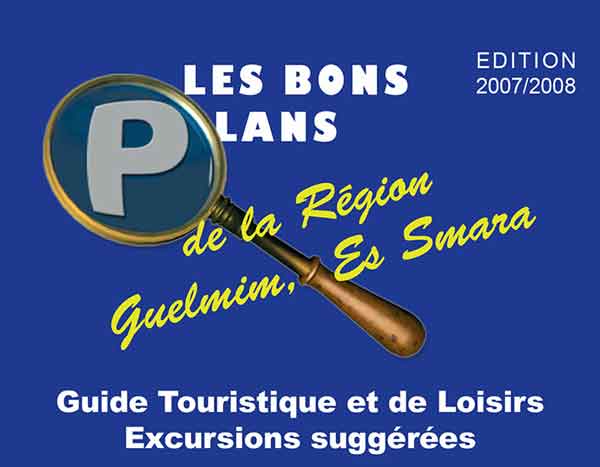
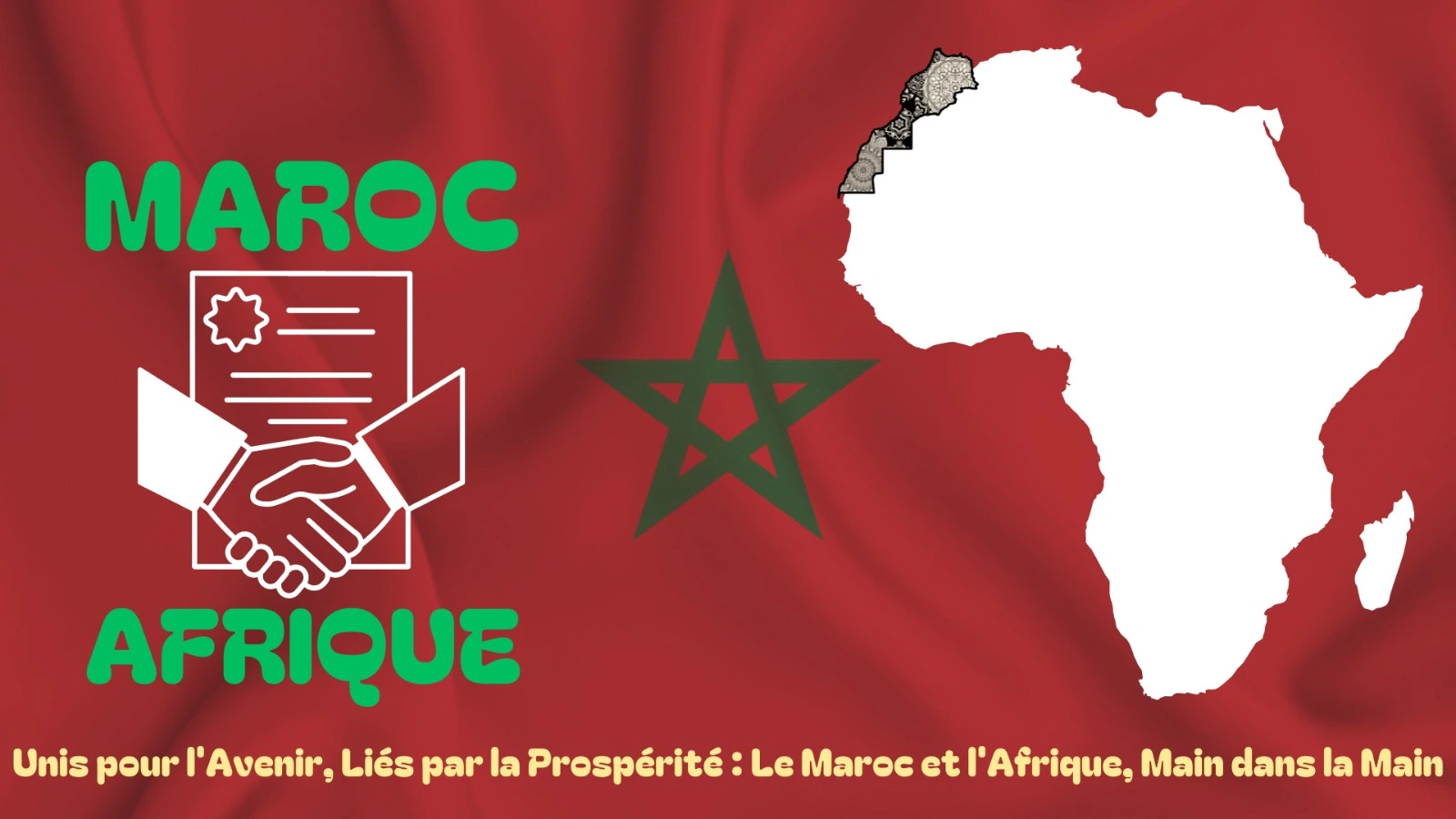
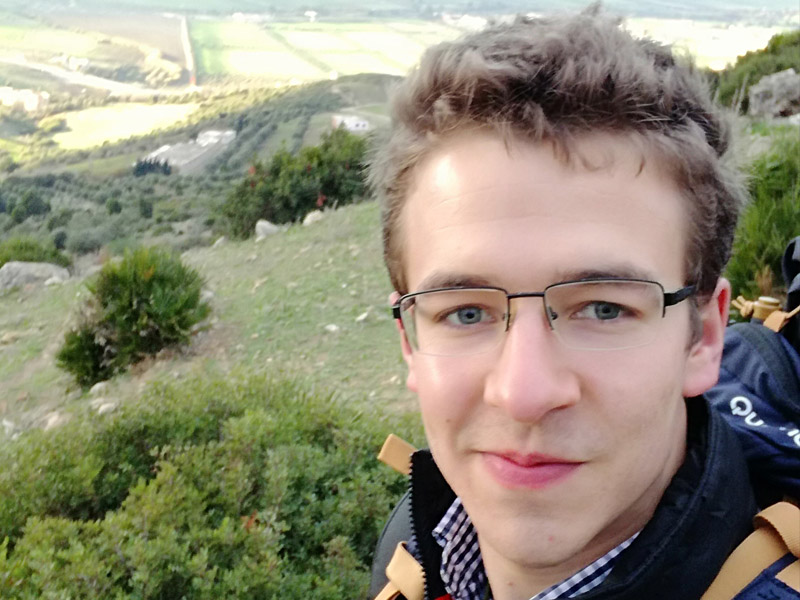
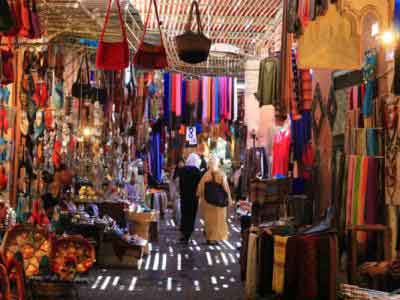
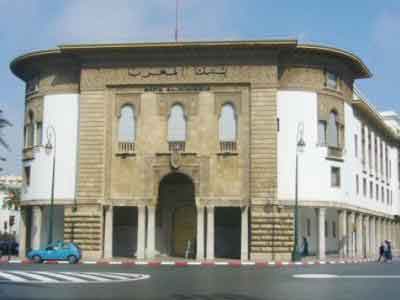
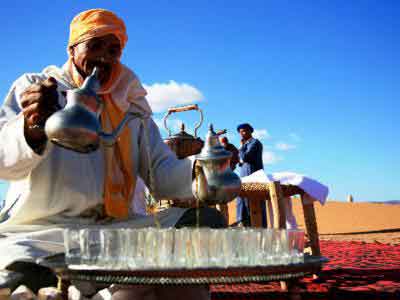


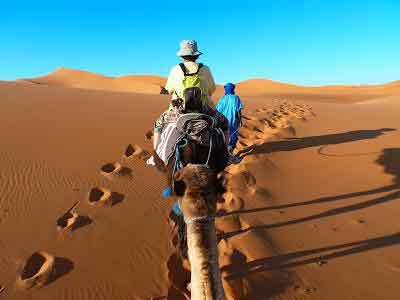
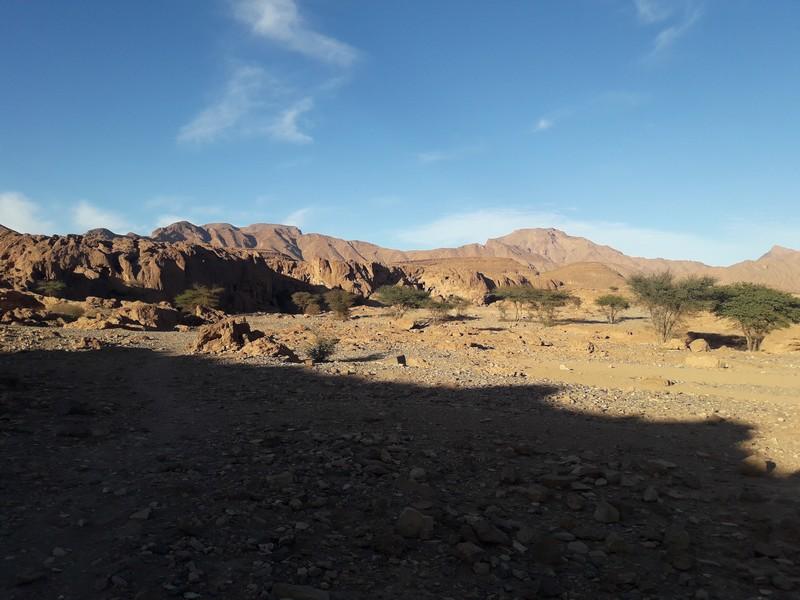
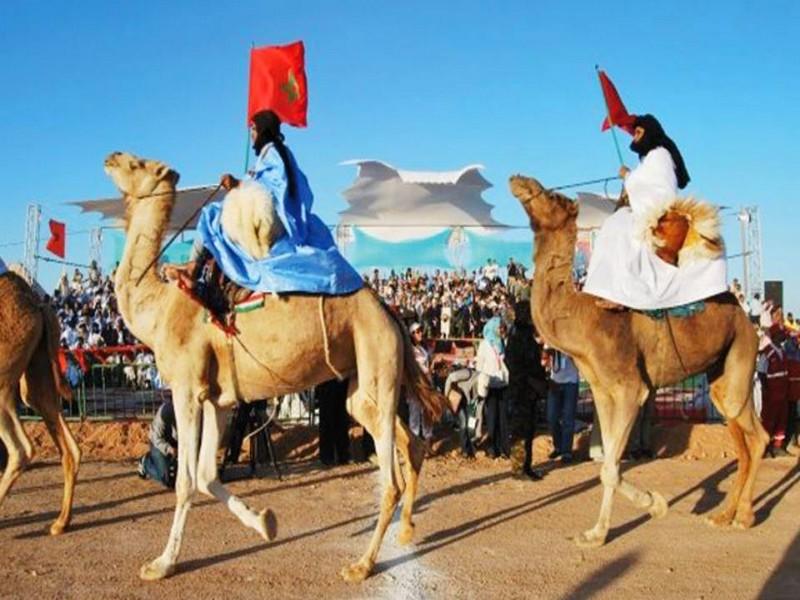
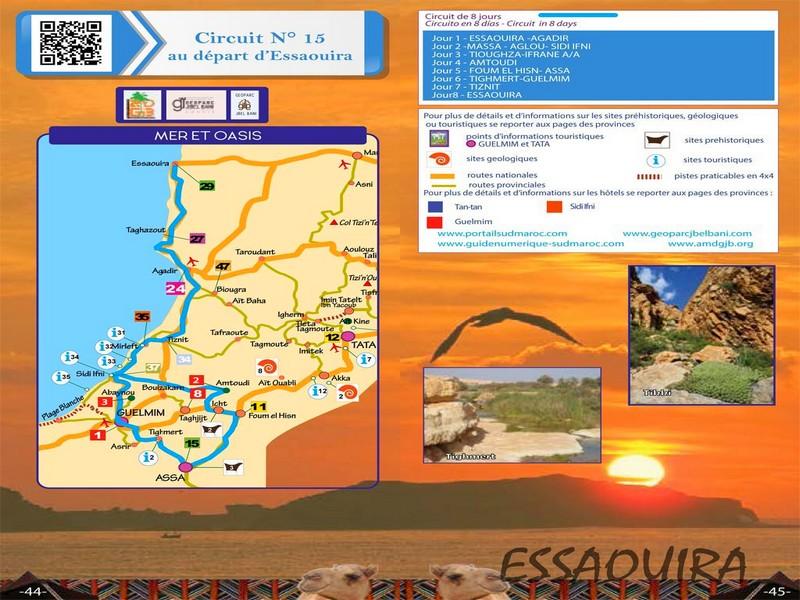
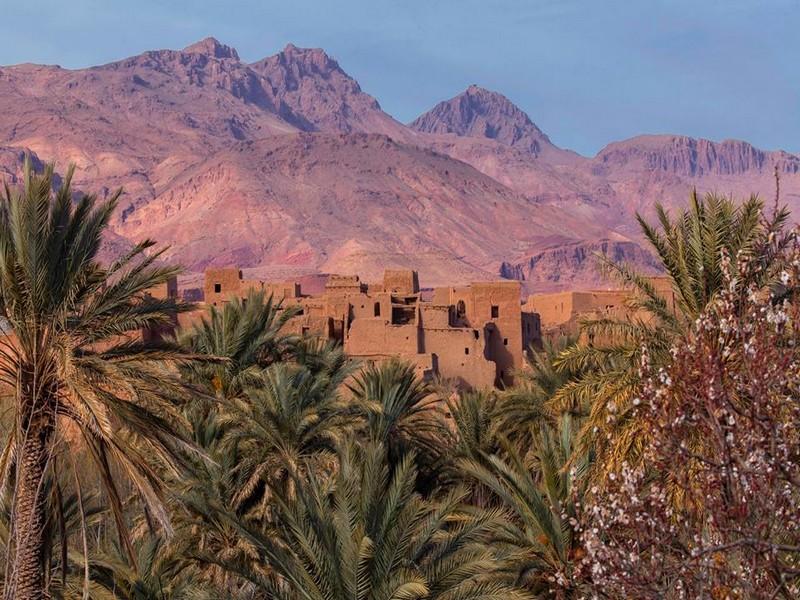
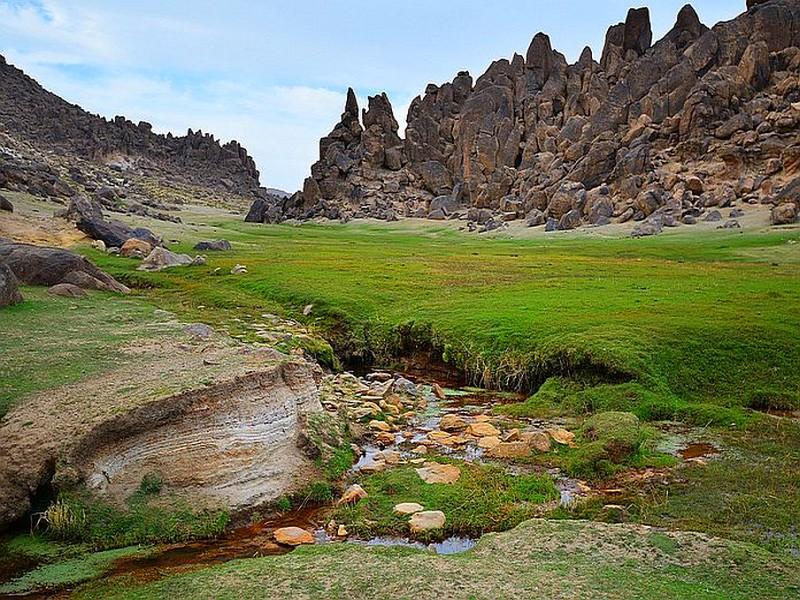
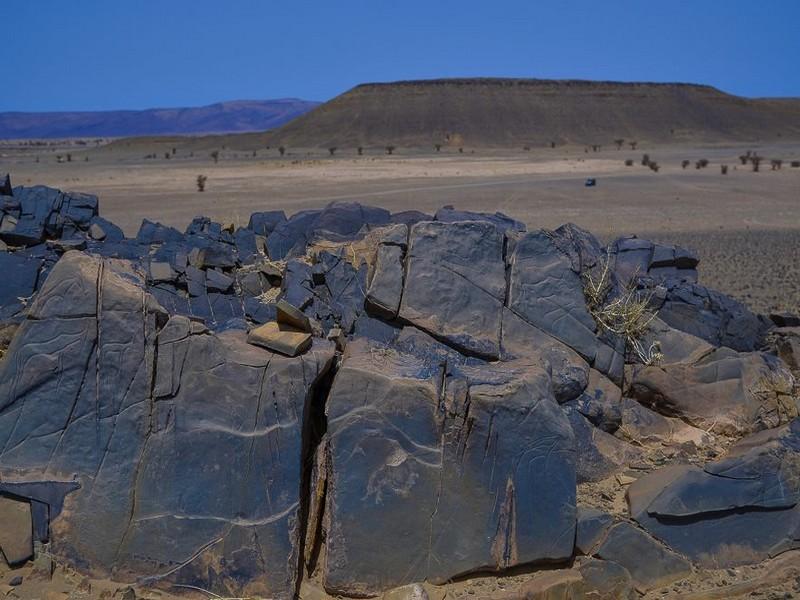
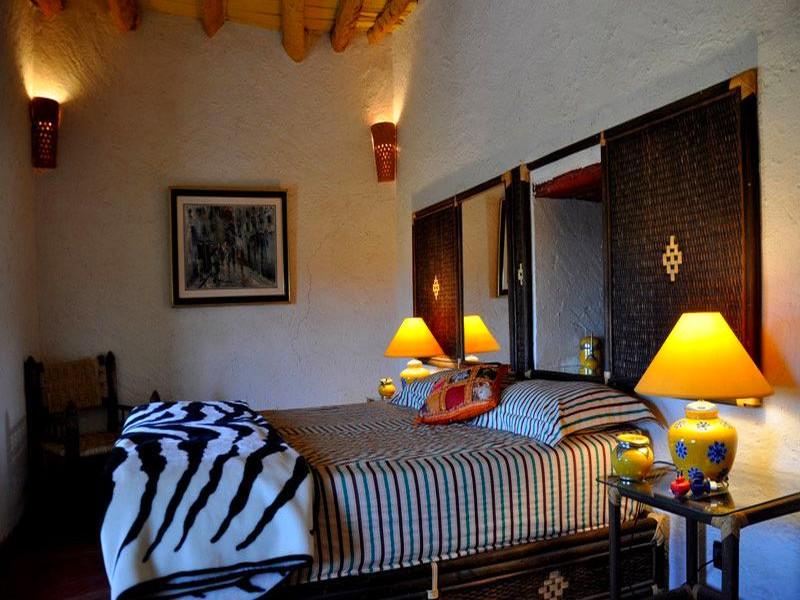
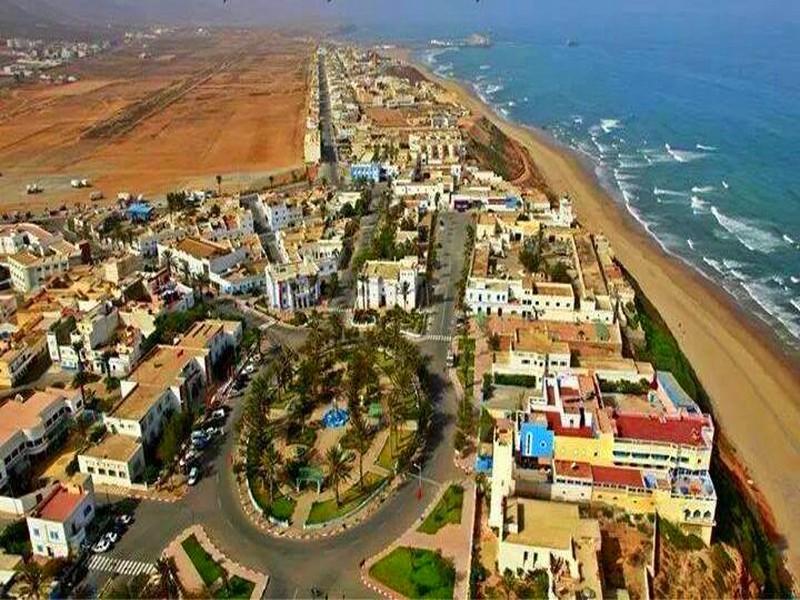
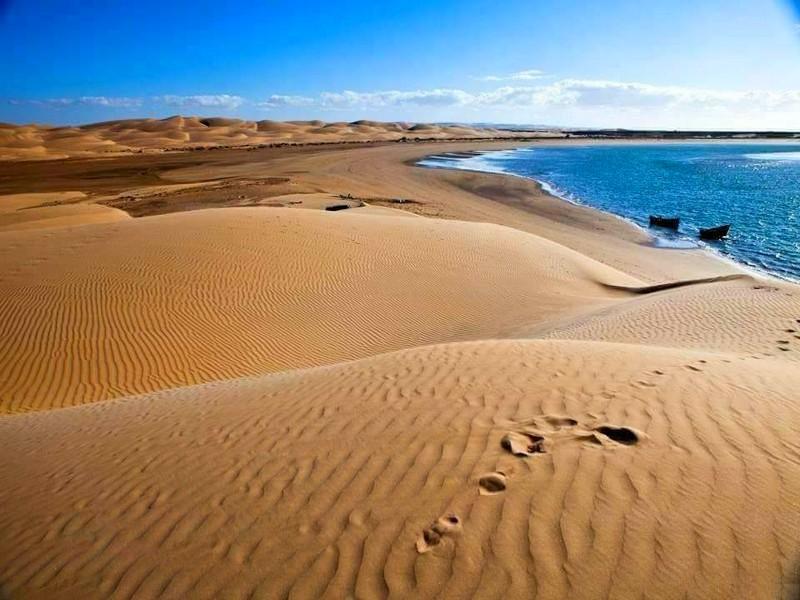
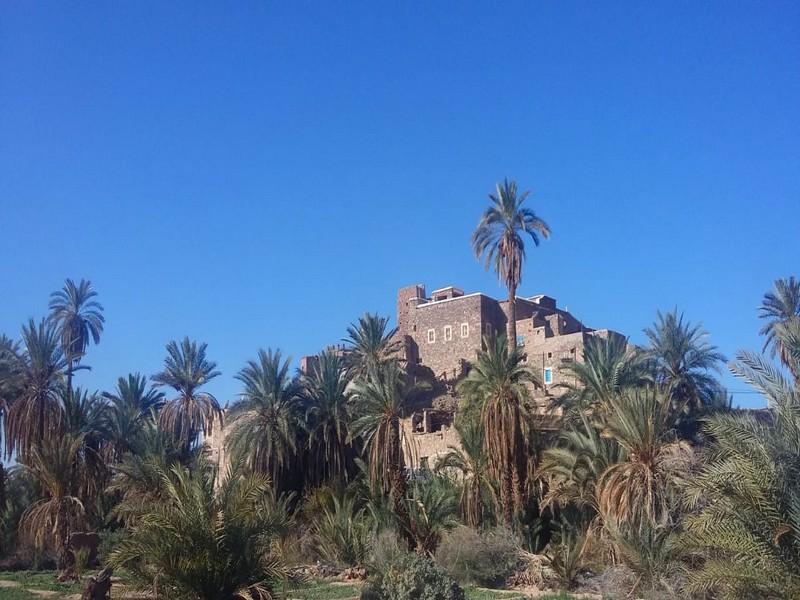


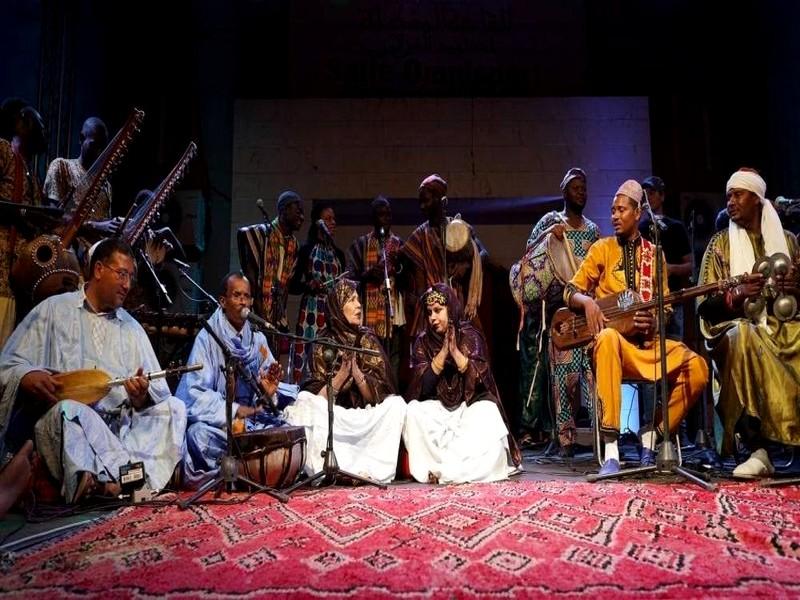
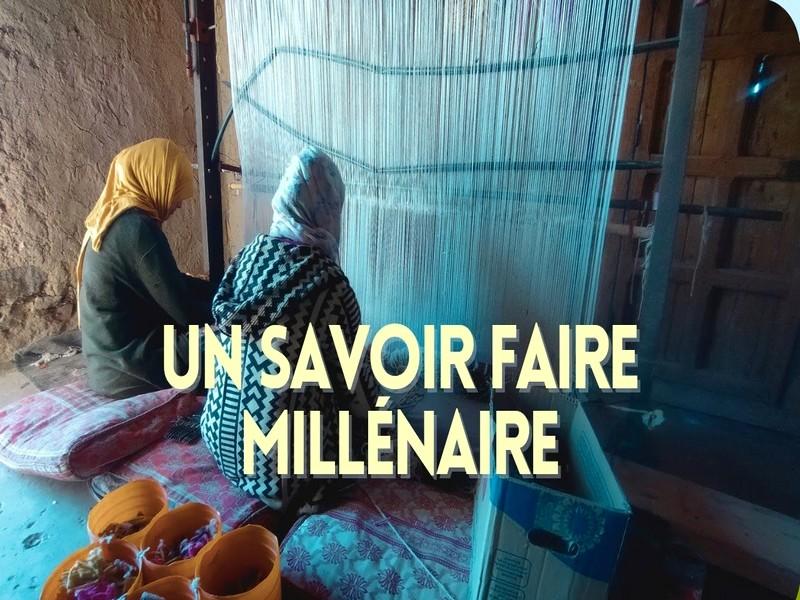
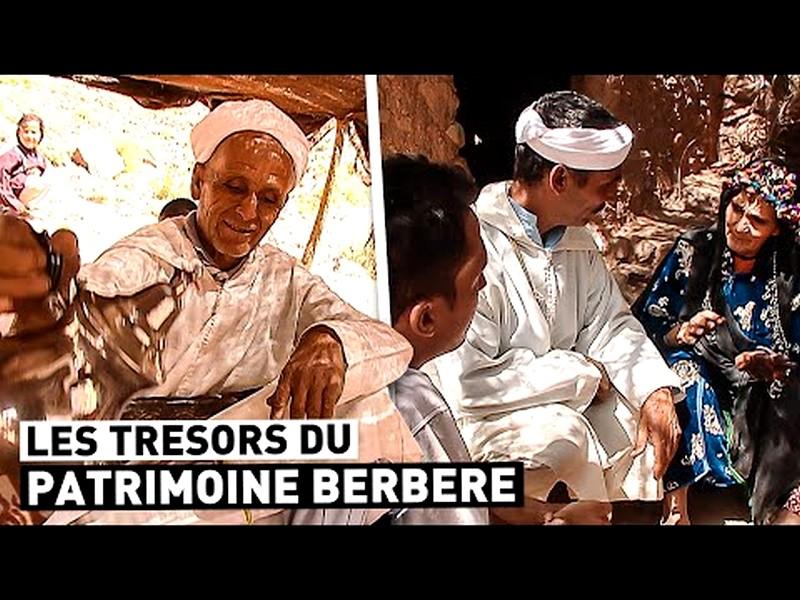
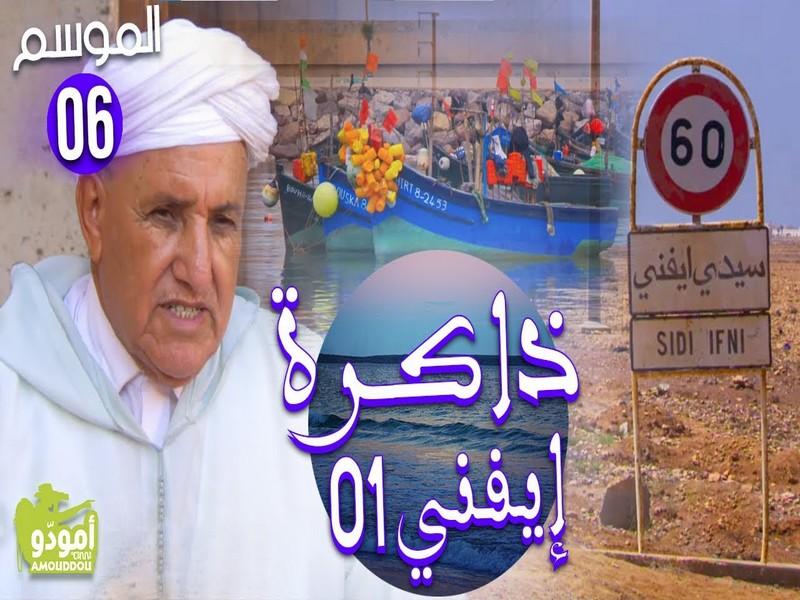
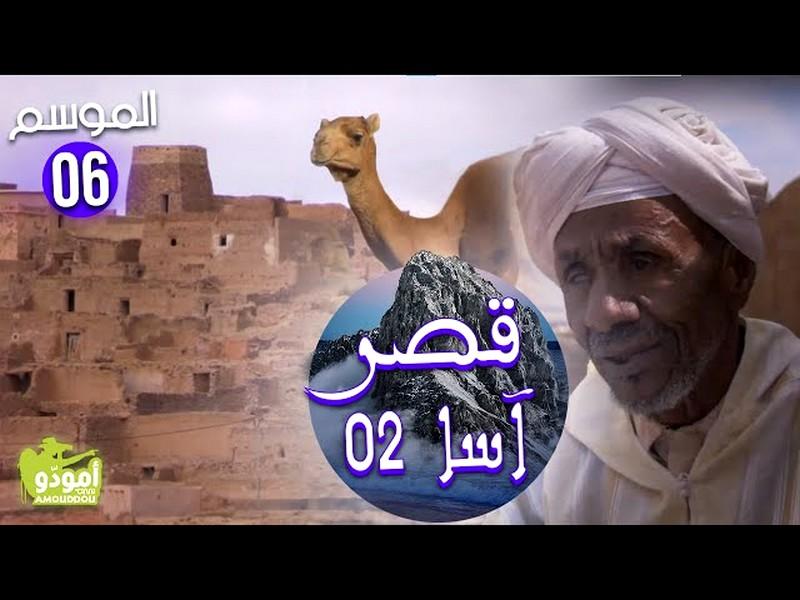
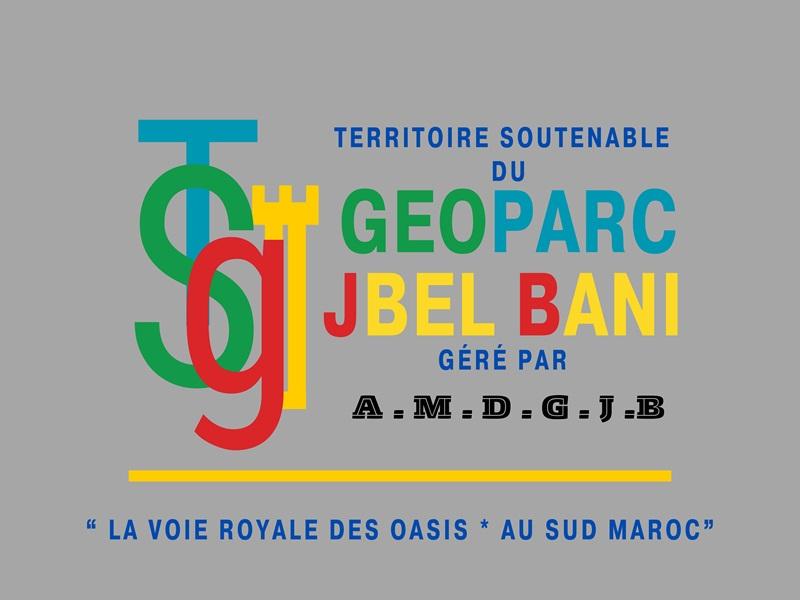
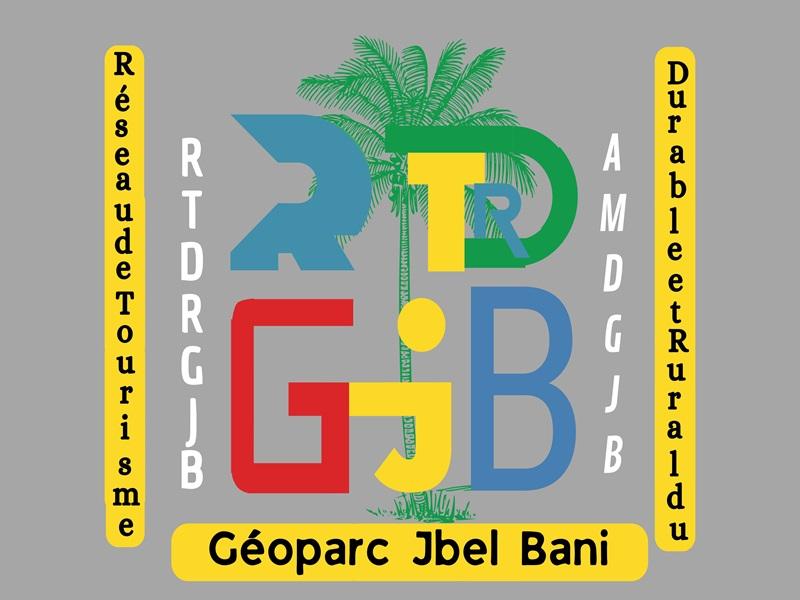
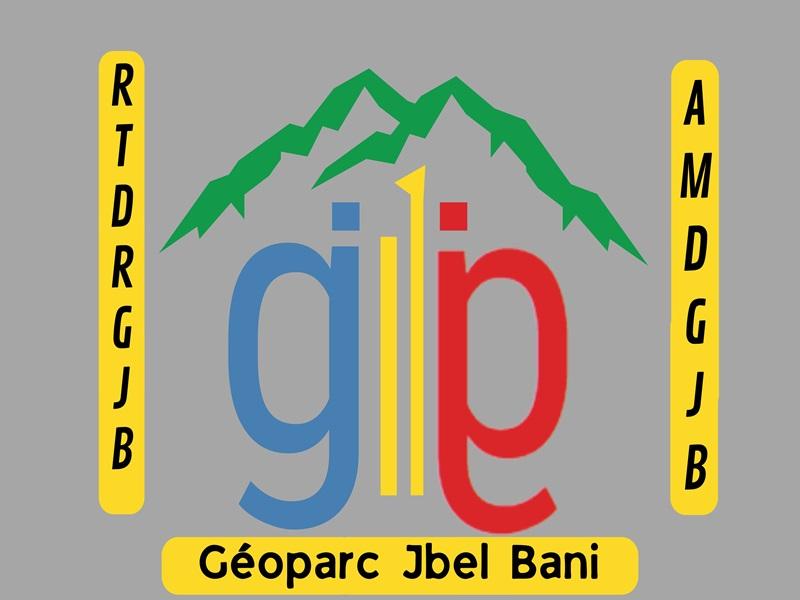
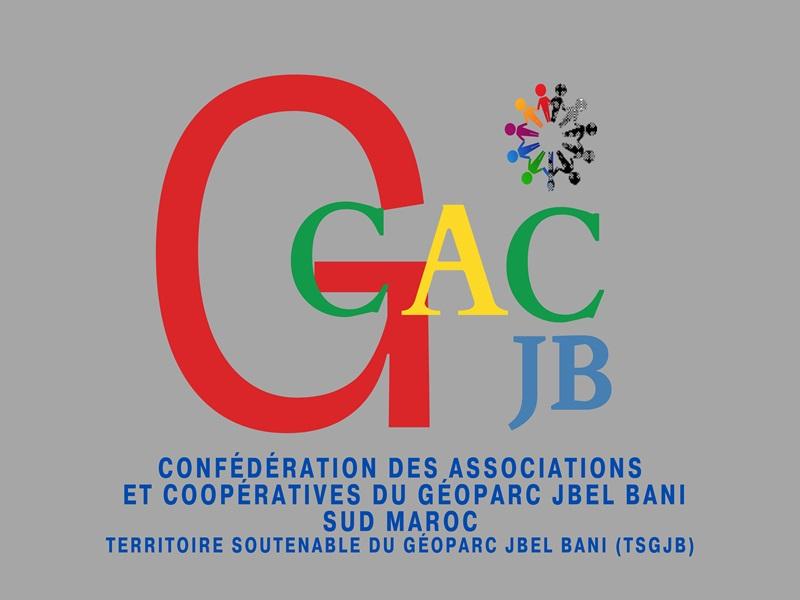
 Découvrir notre région
Découvrir notre région